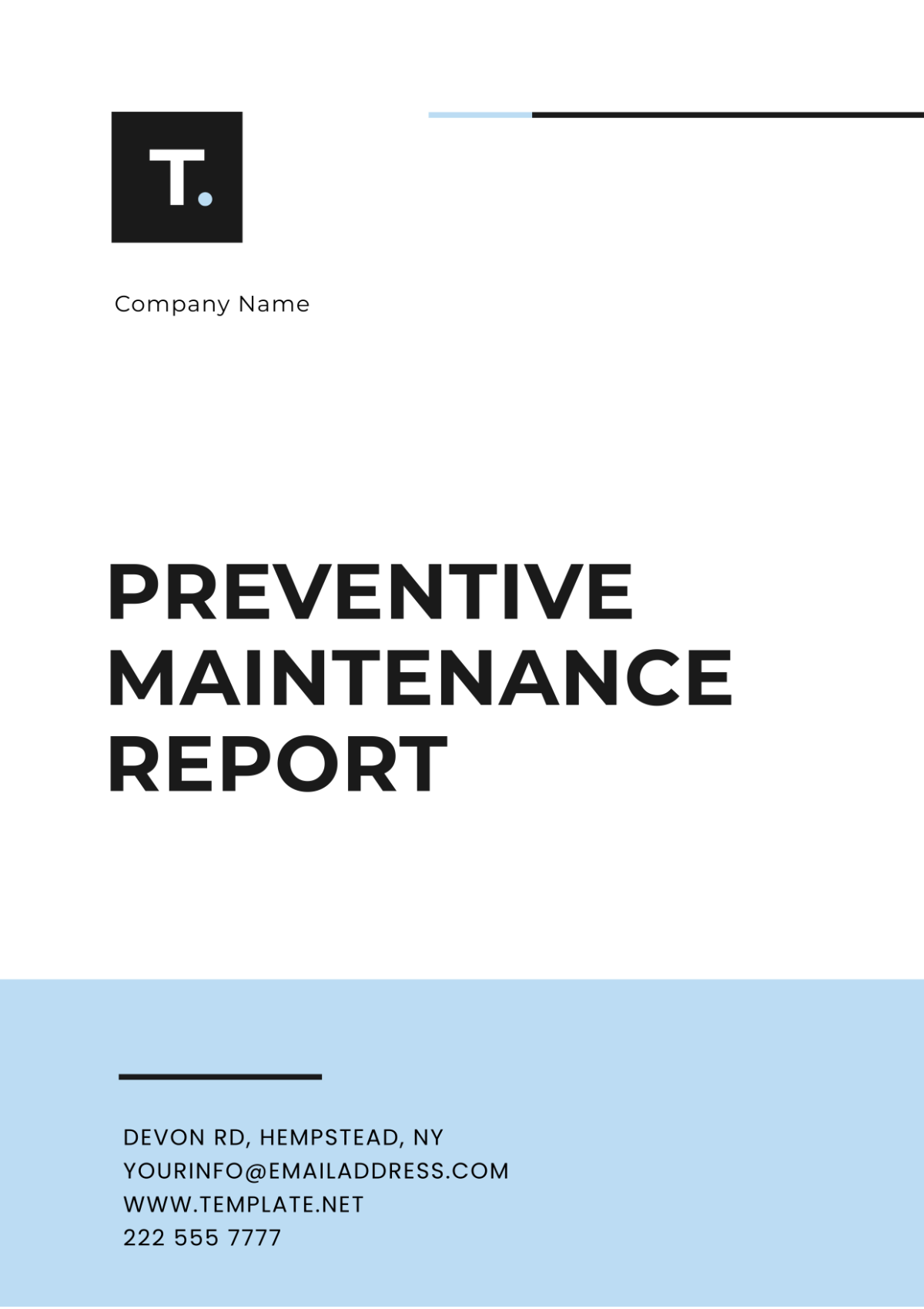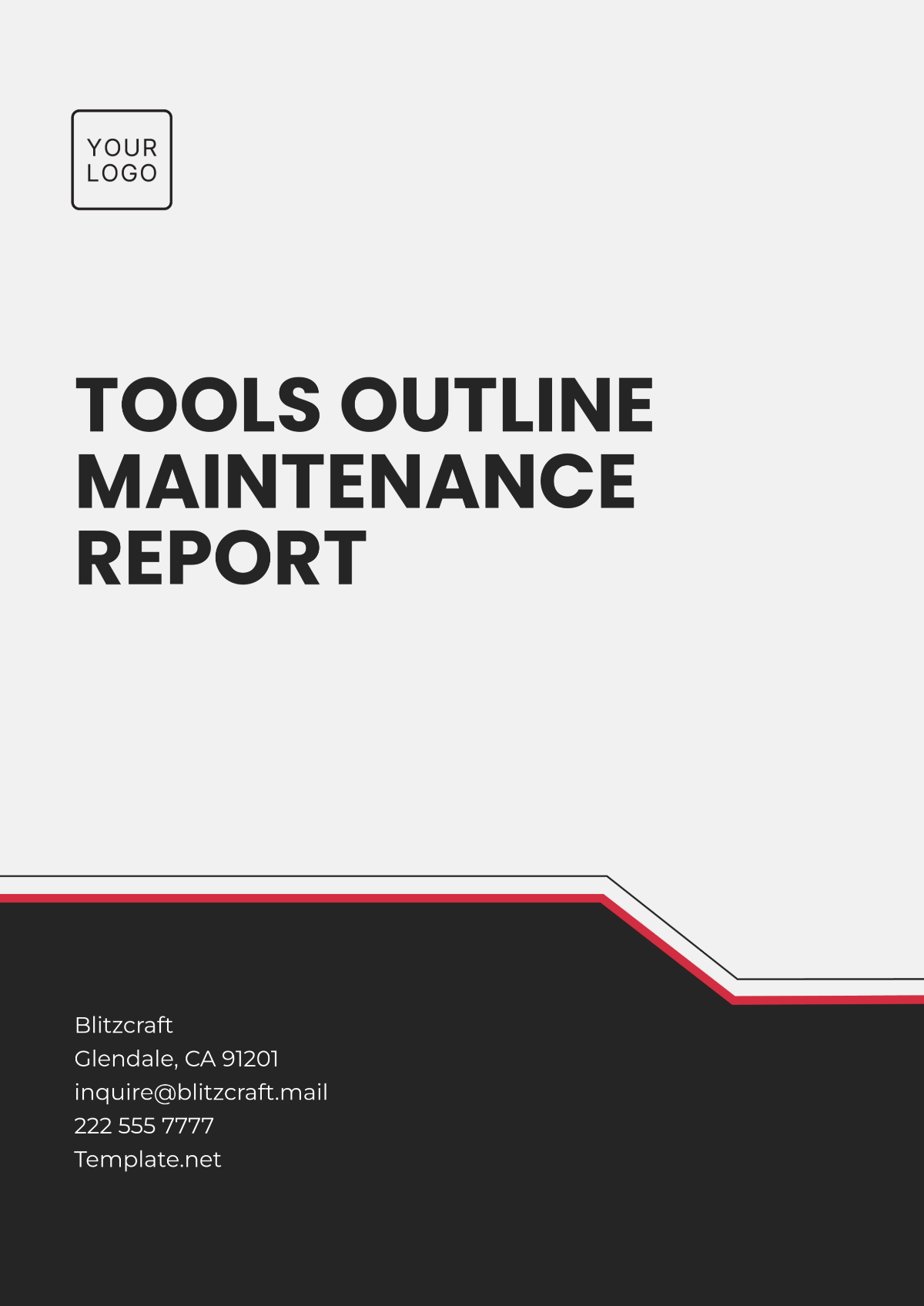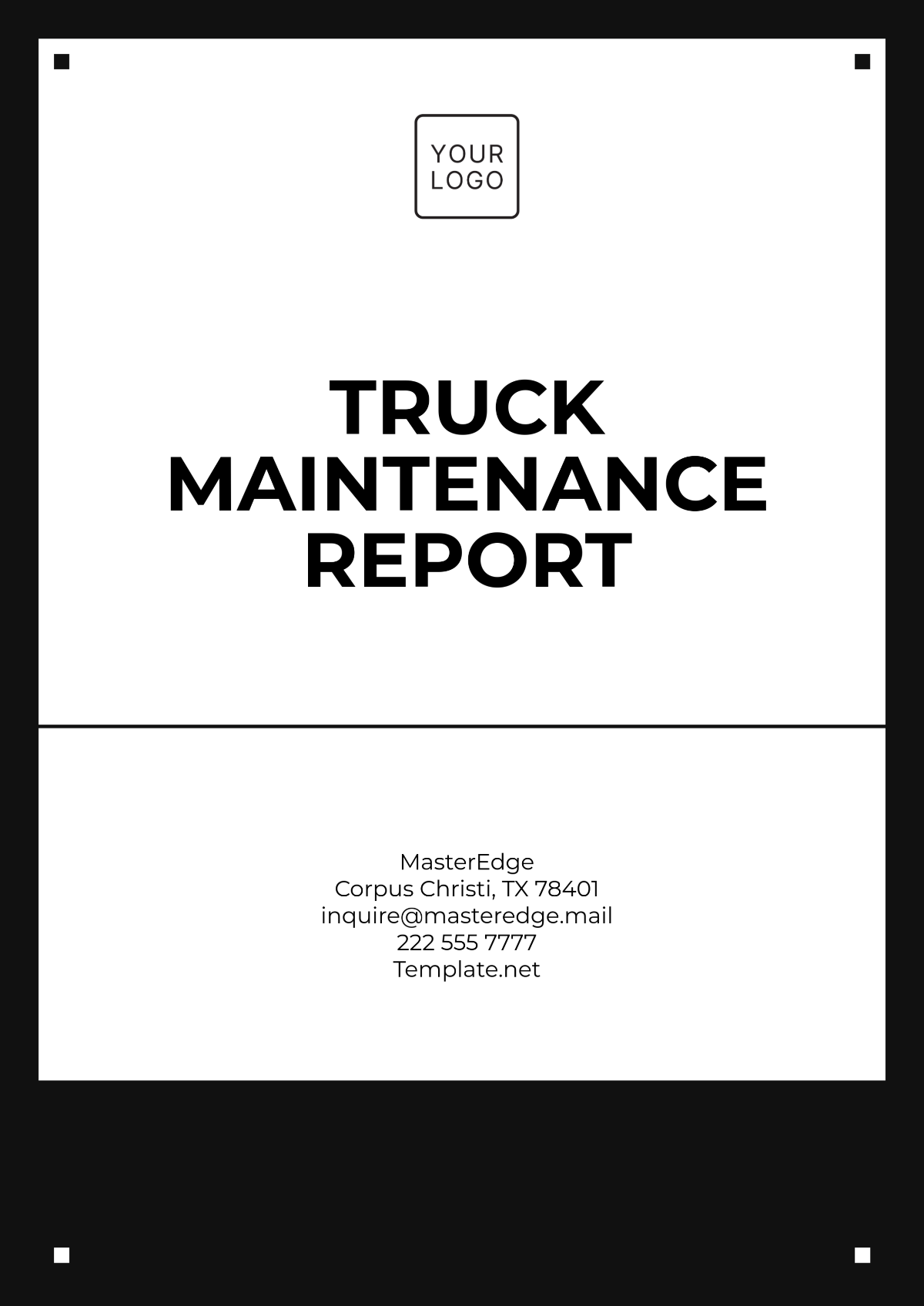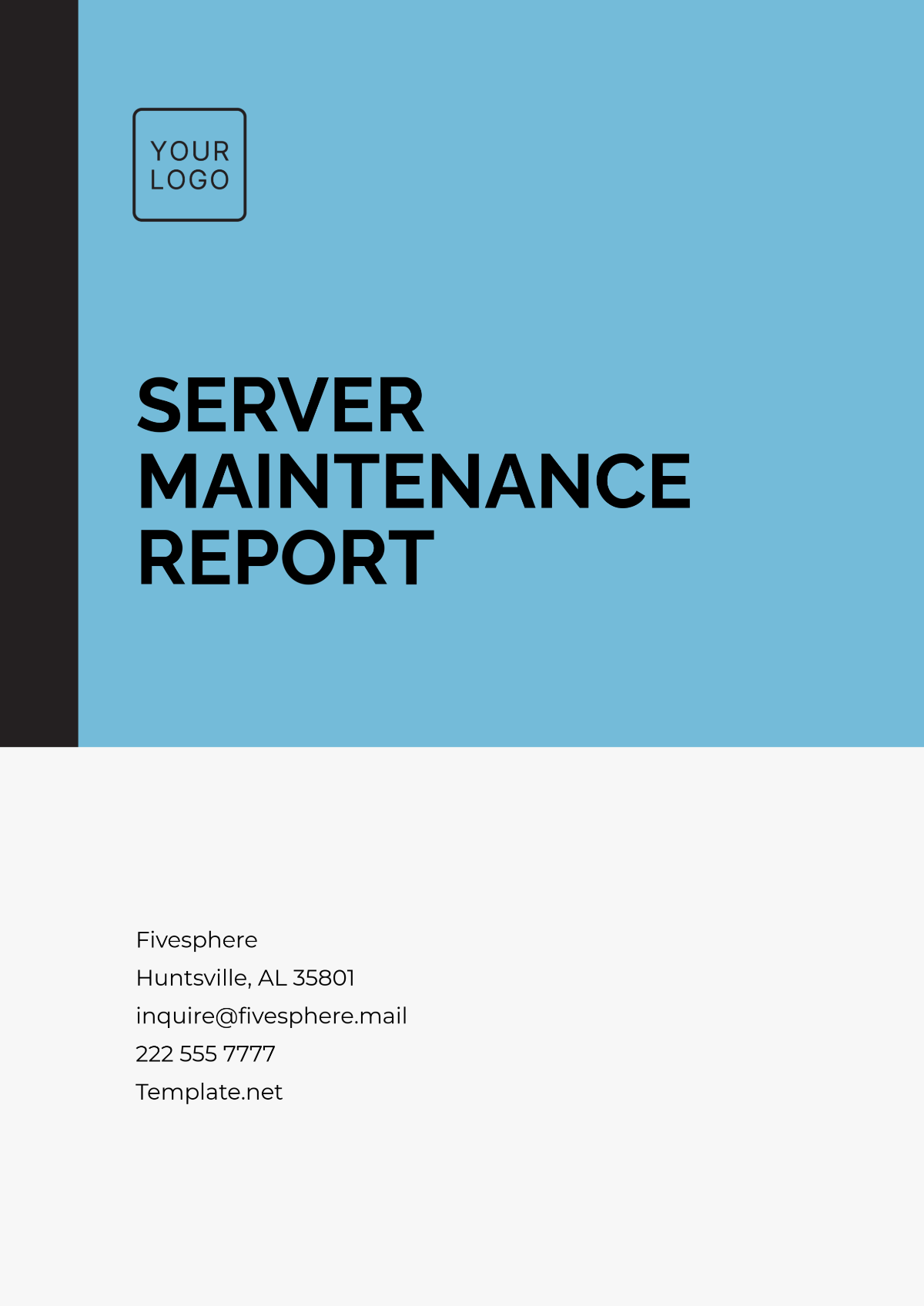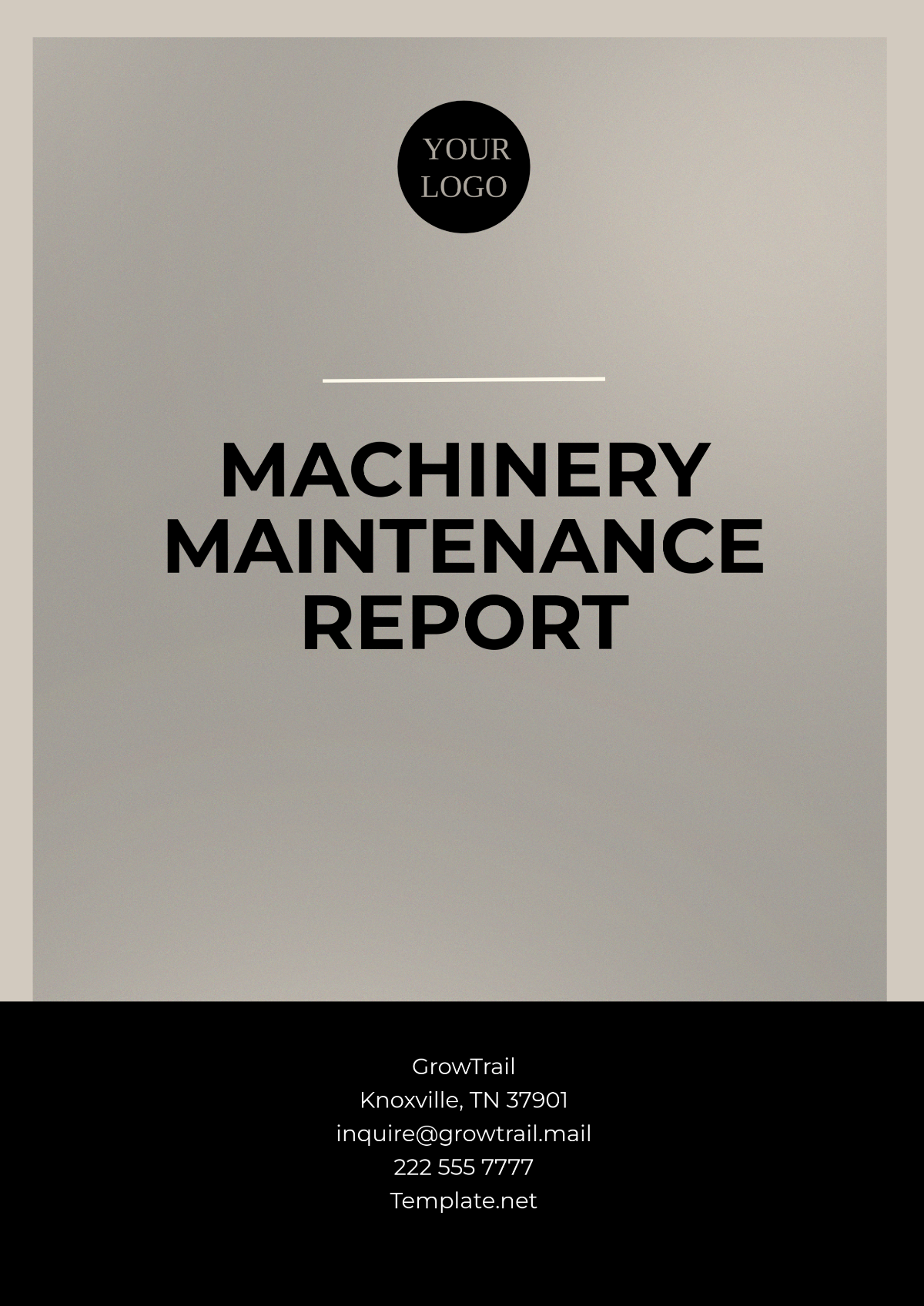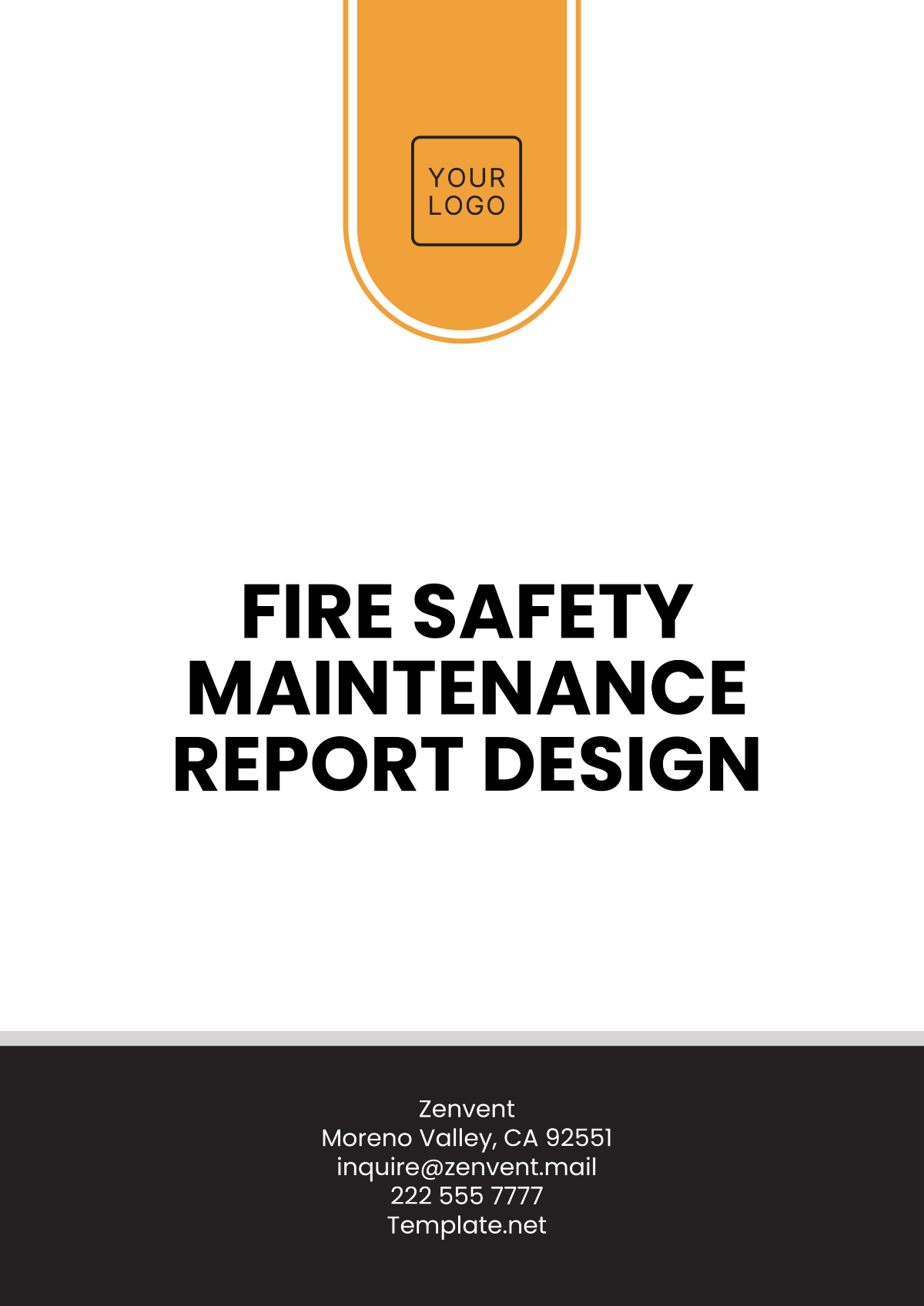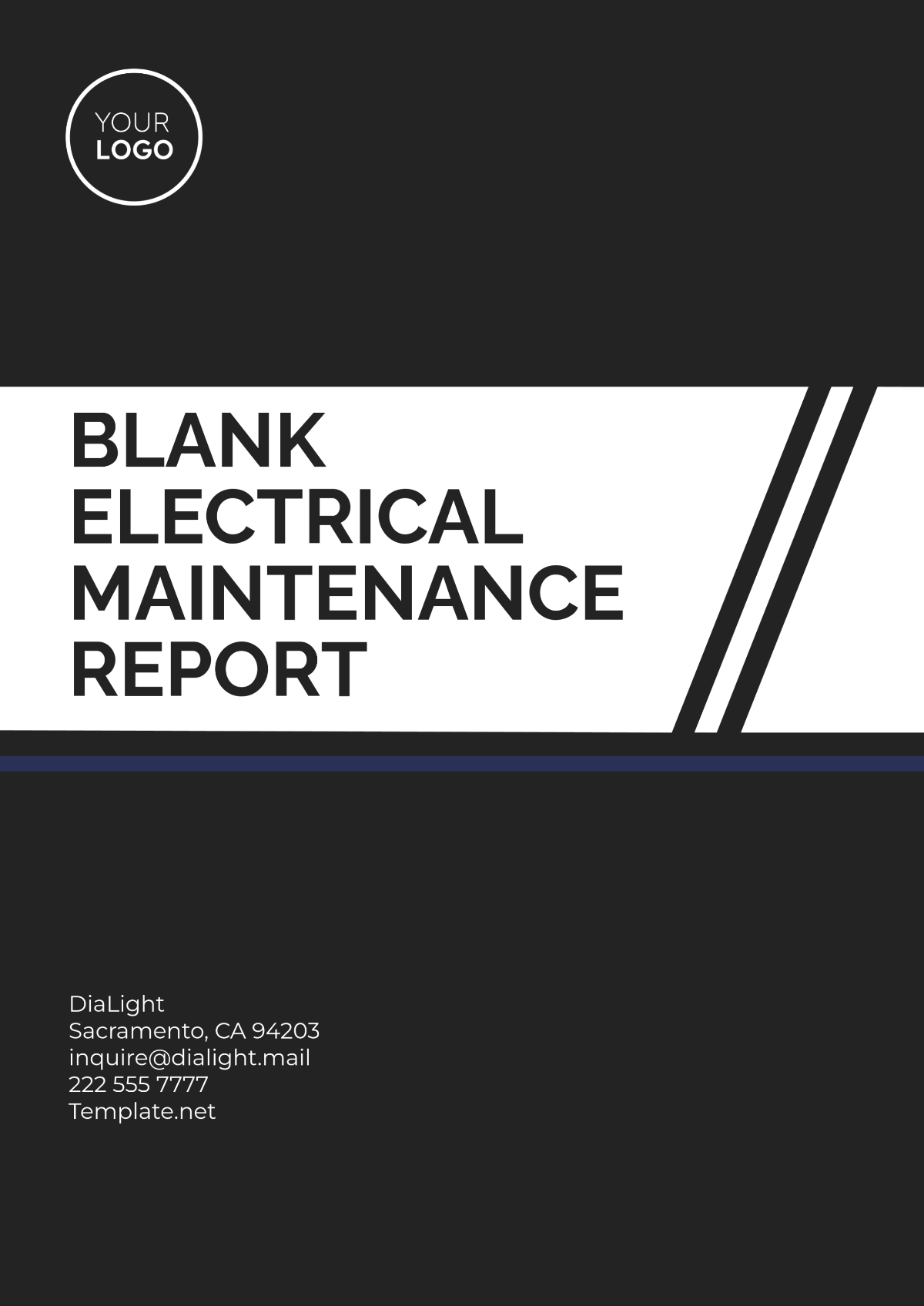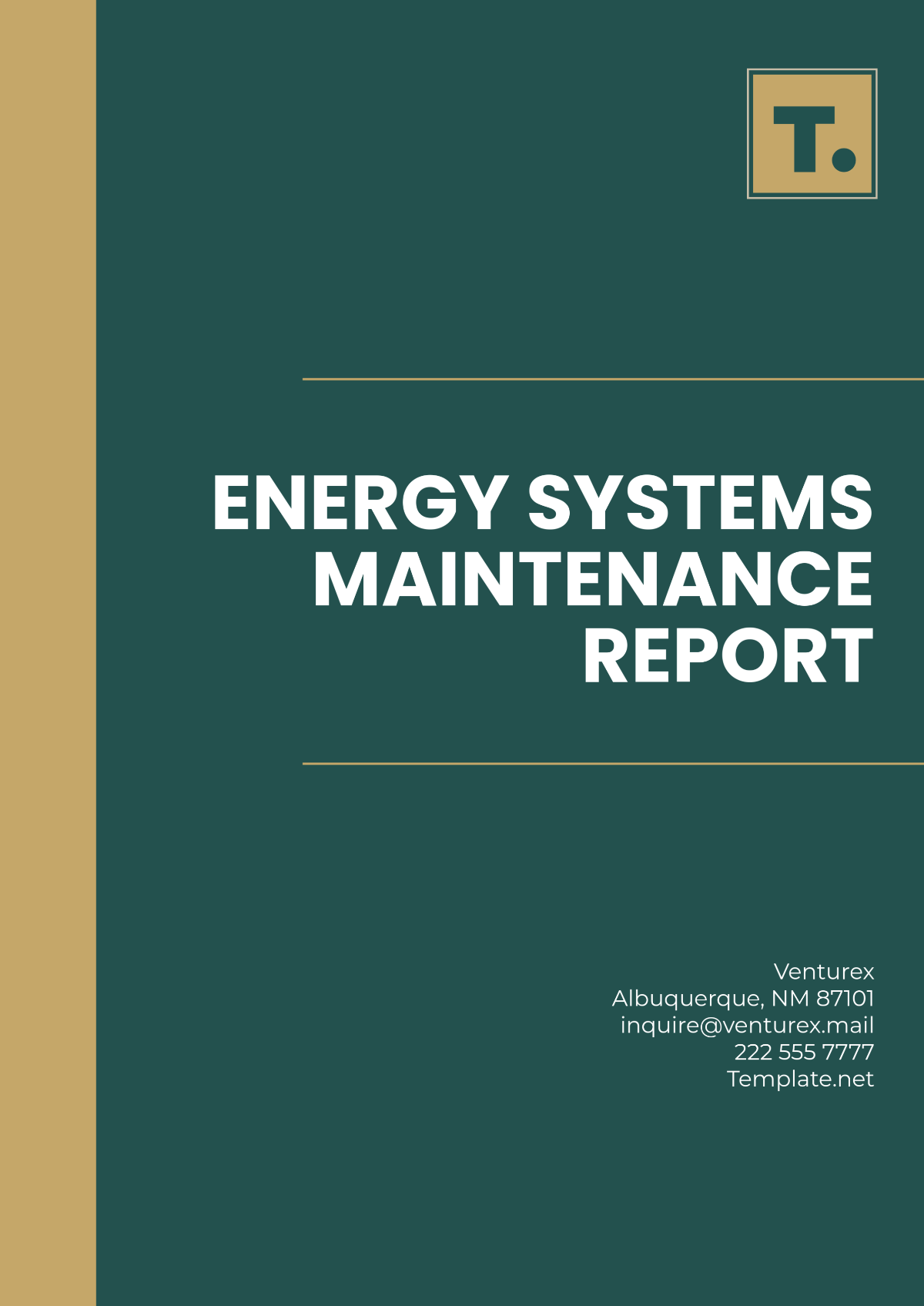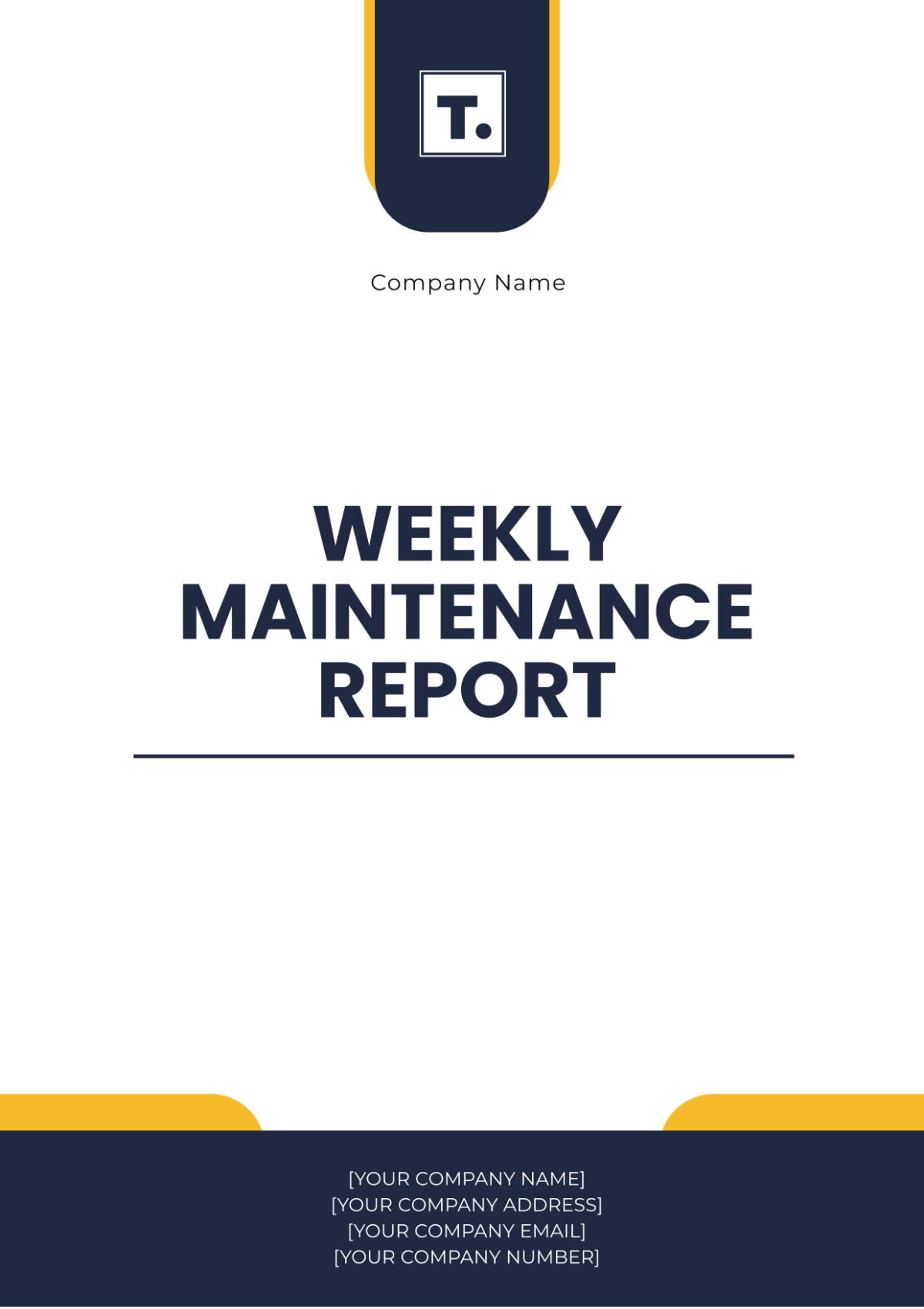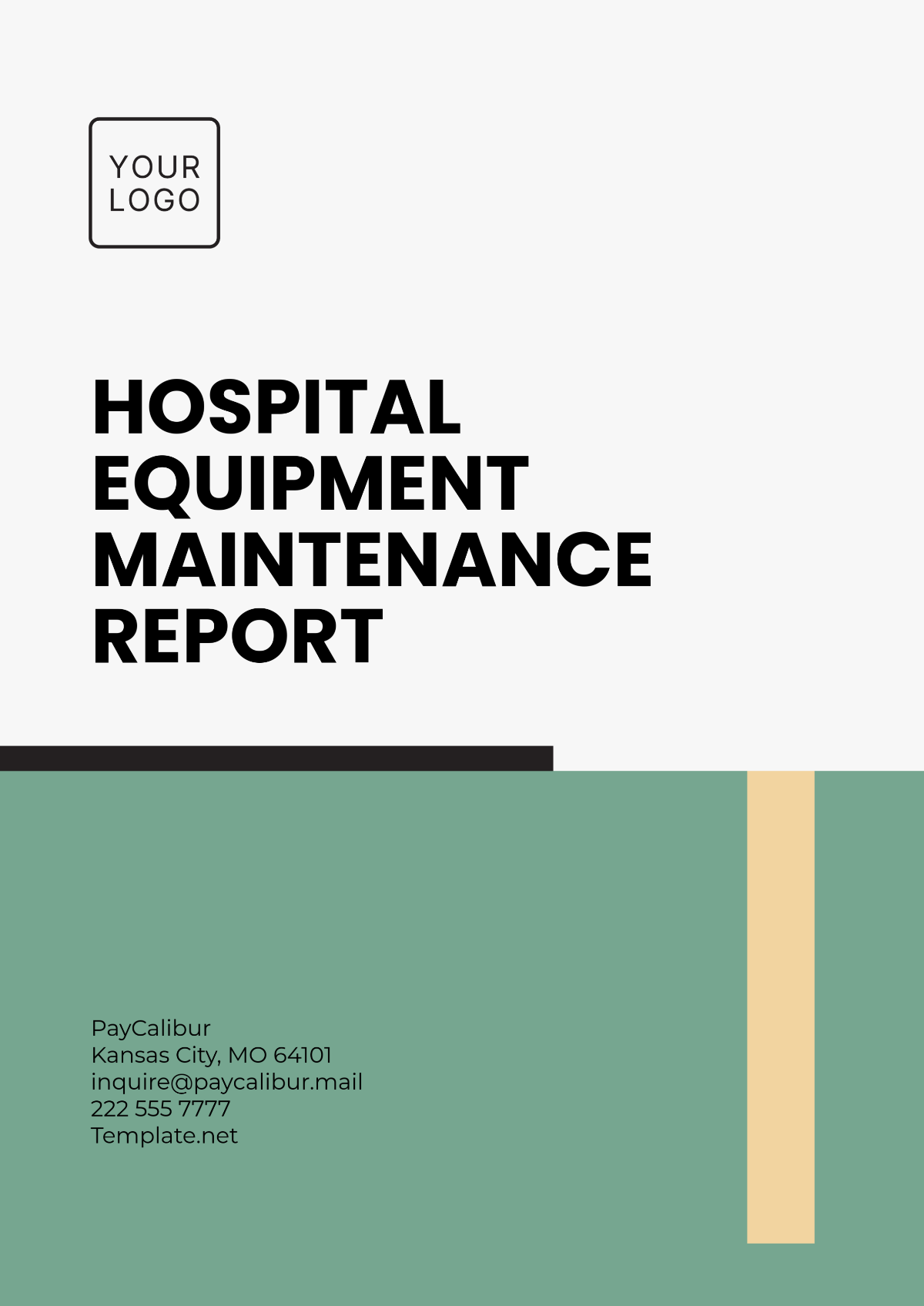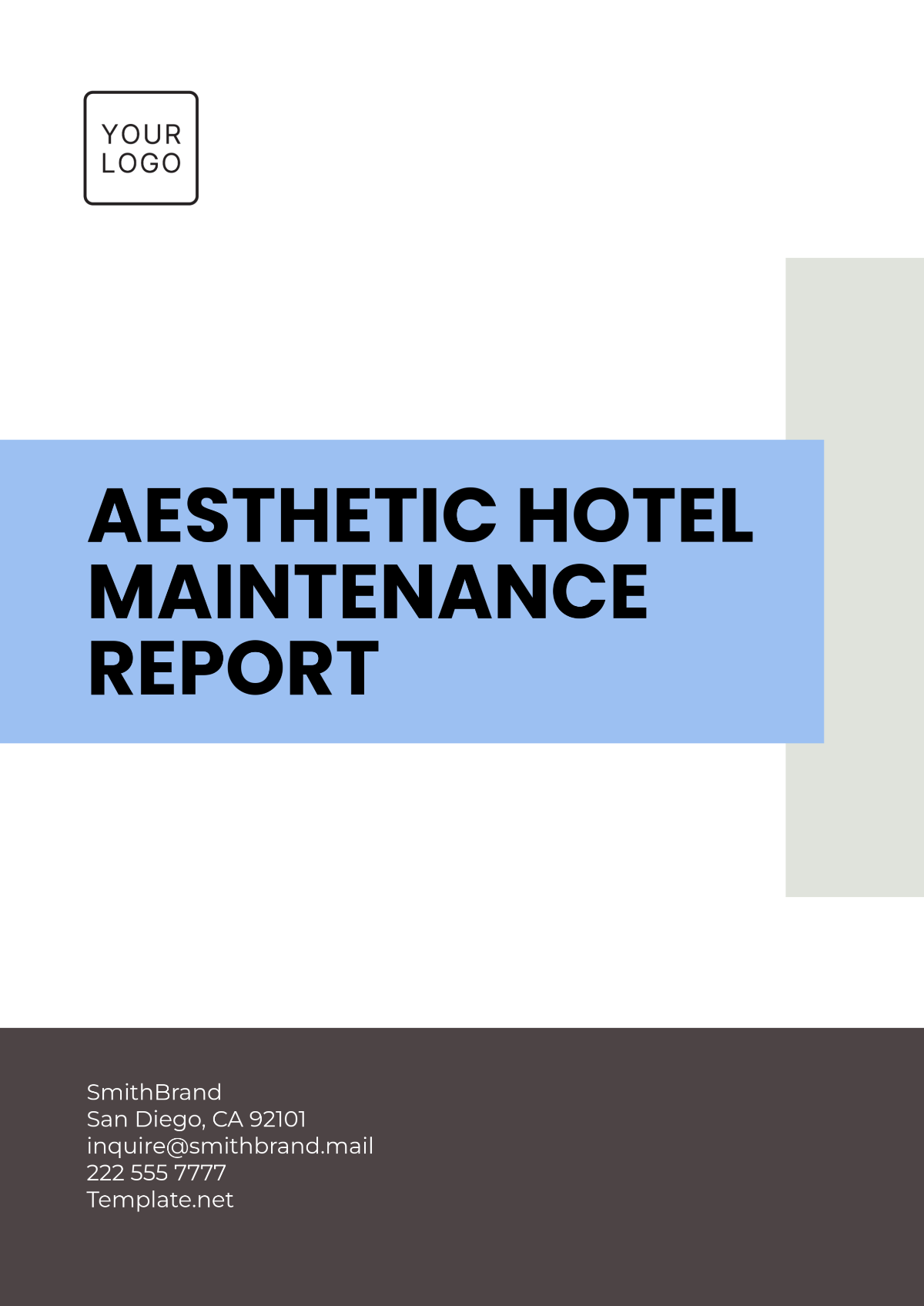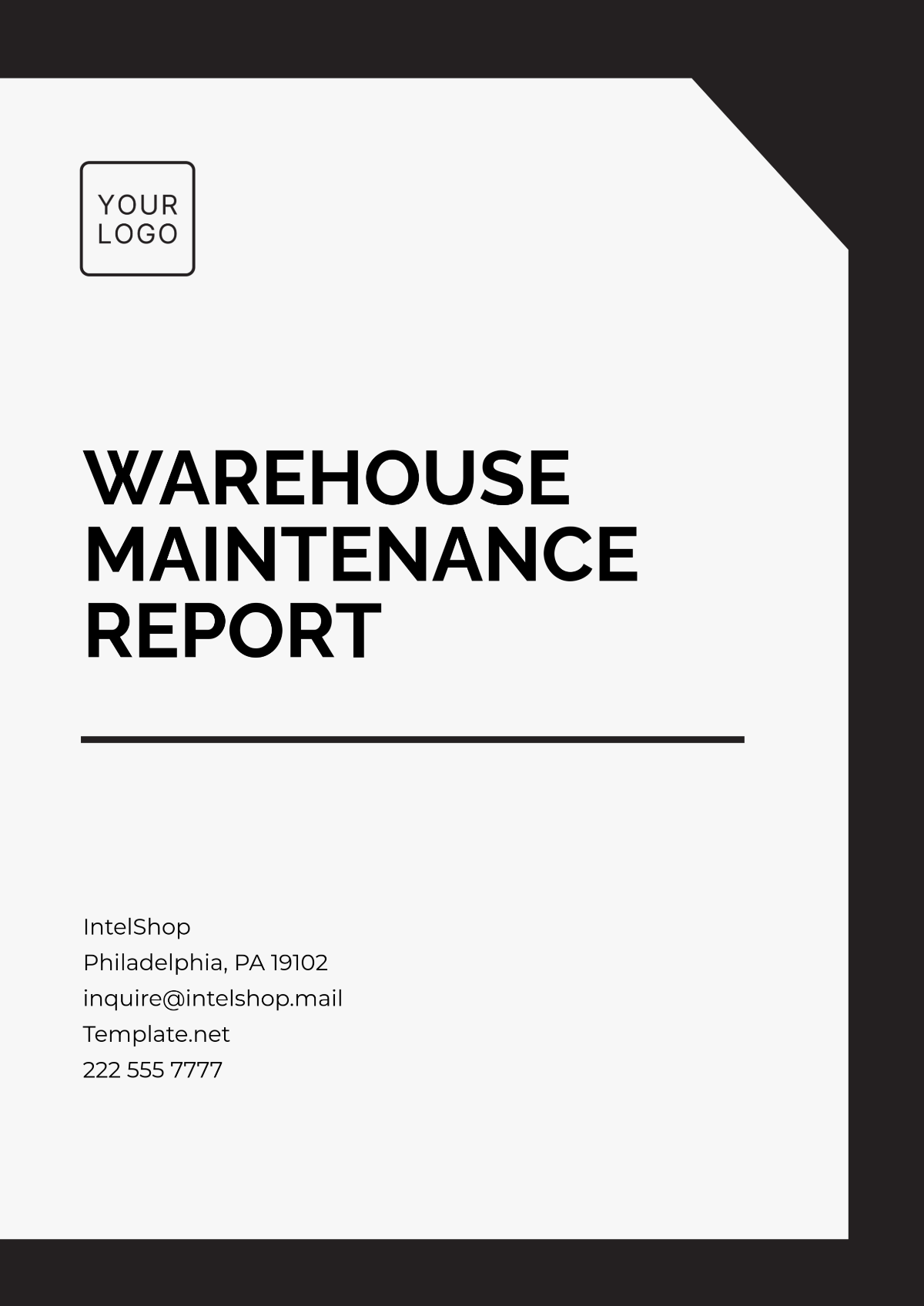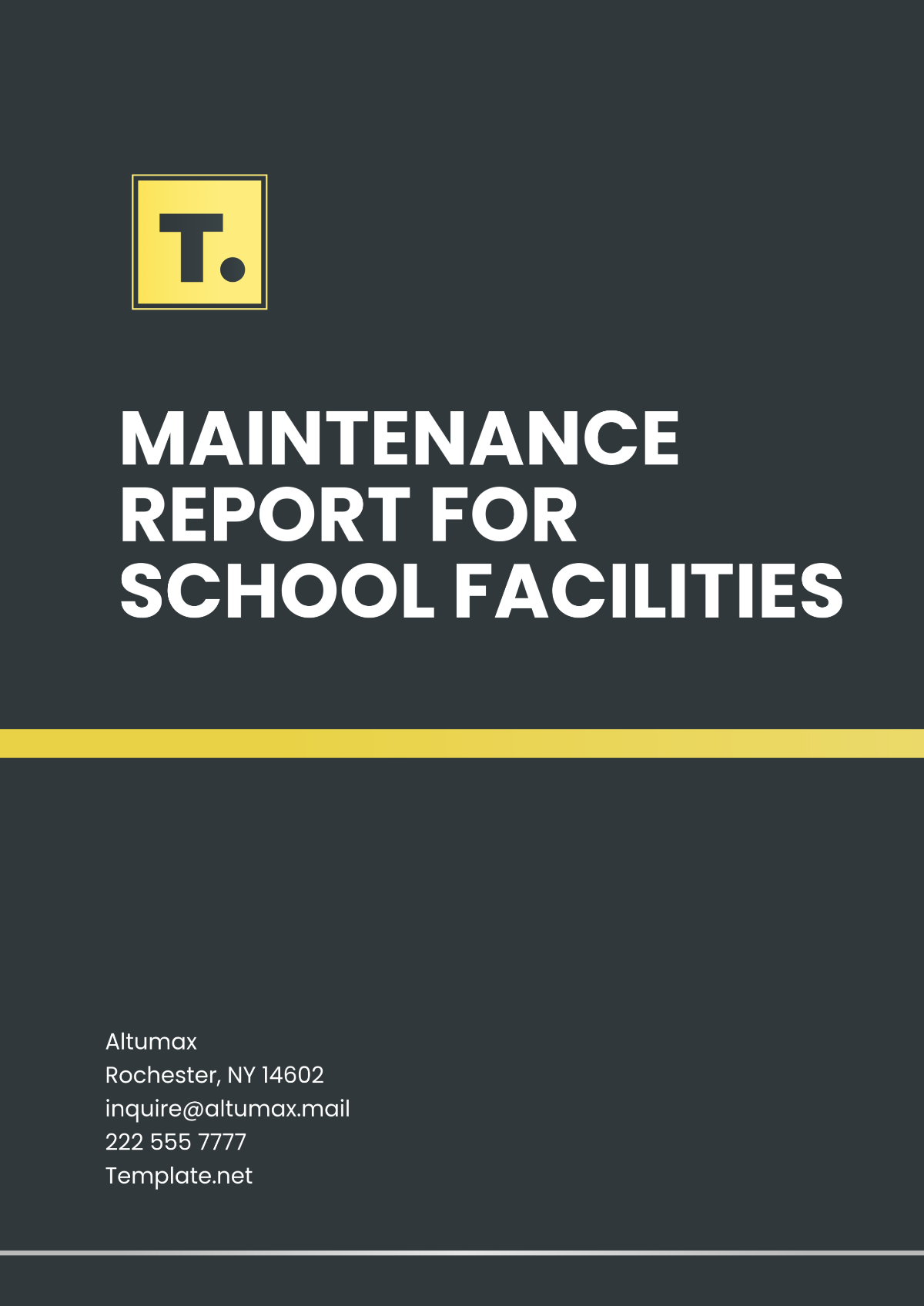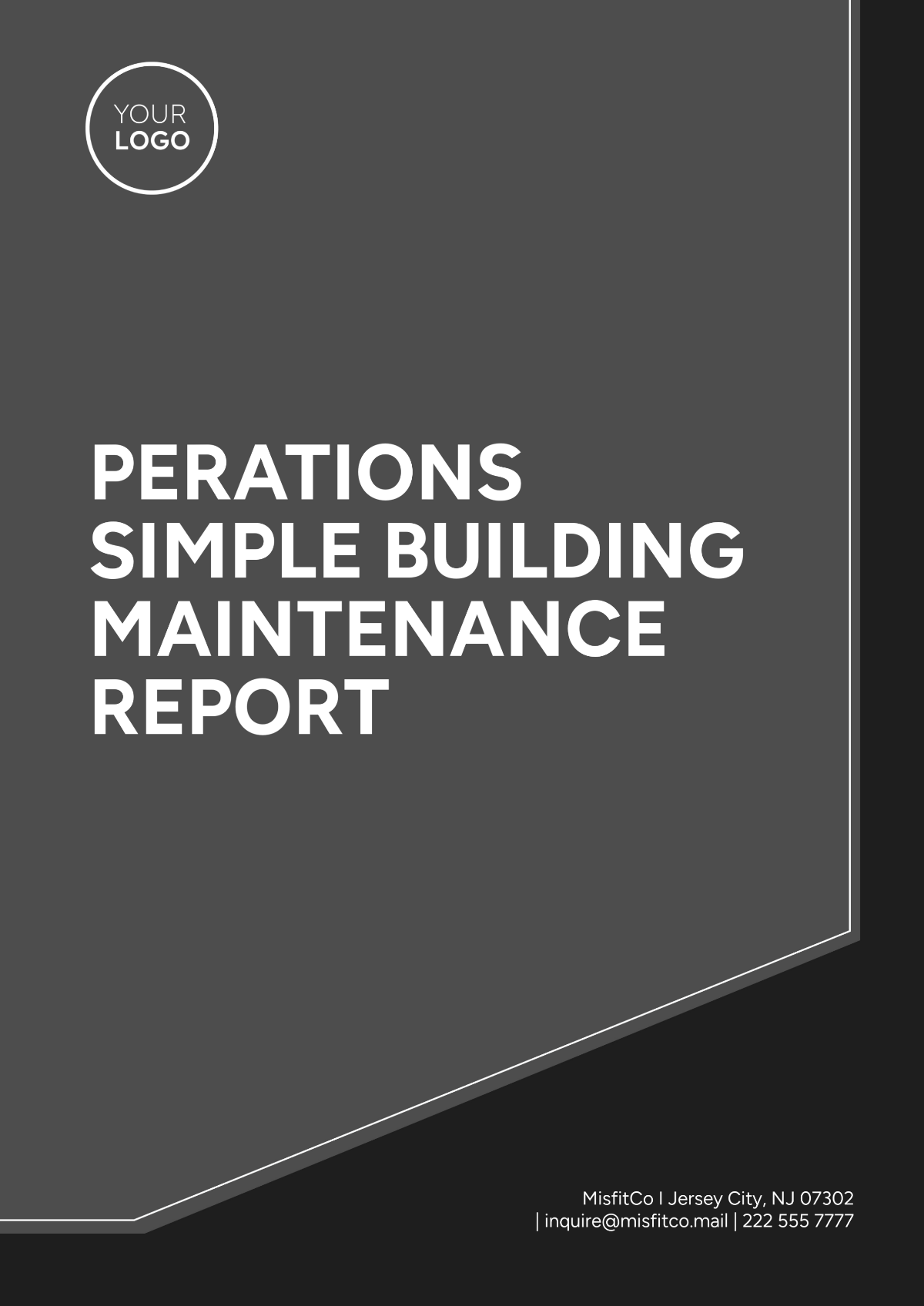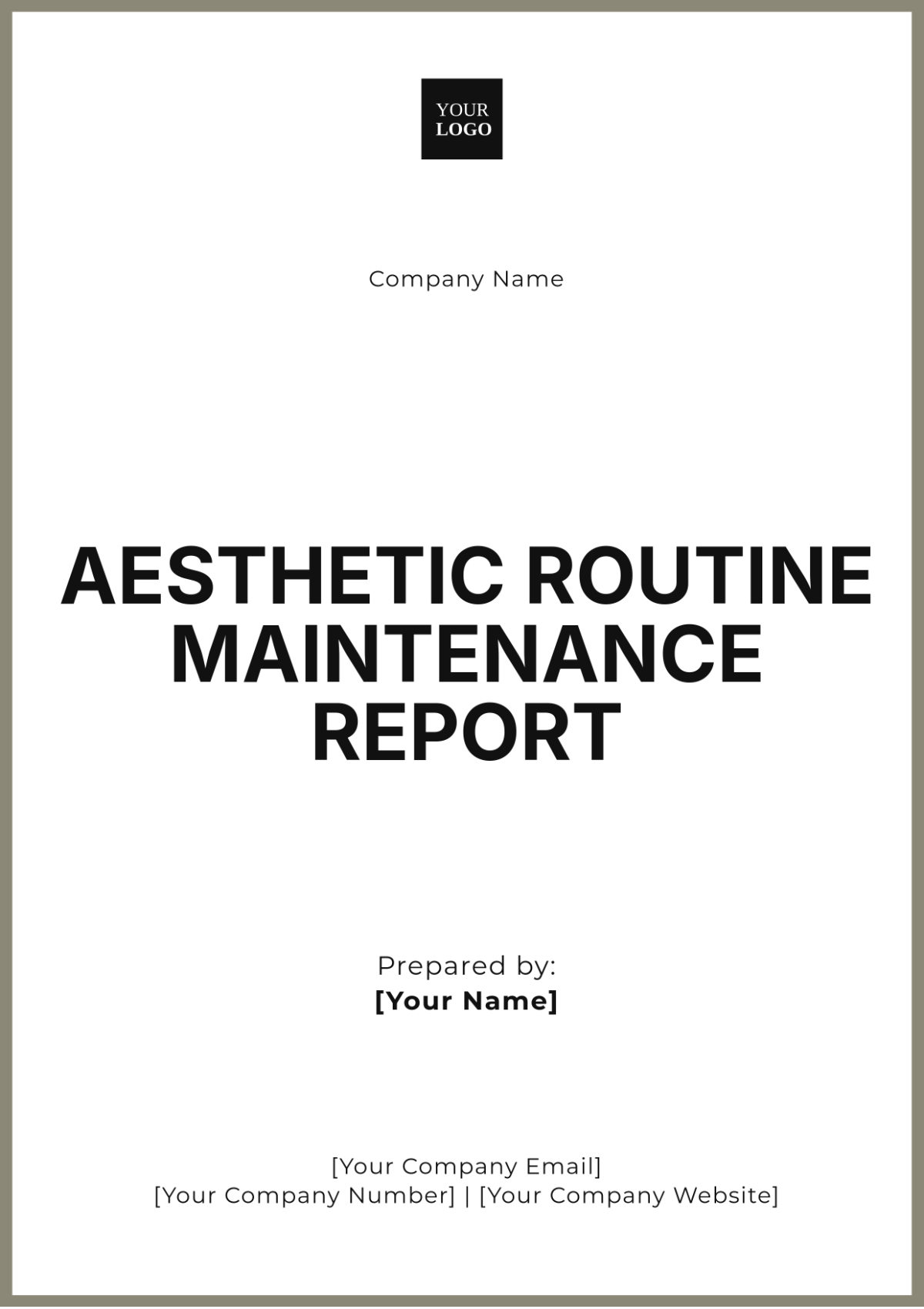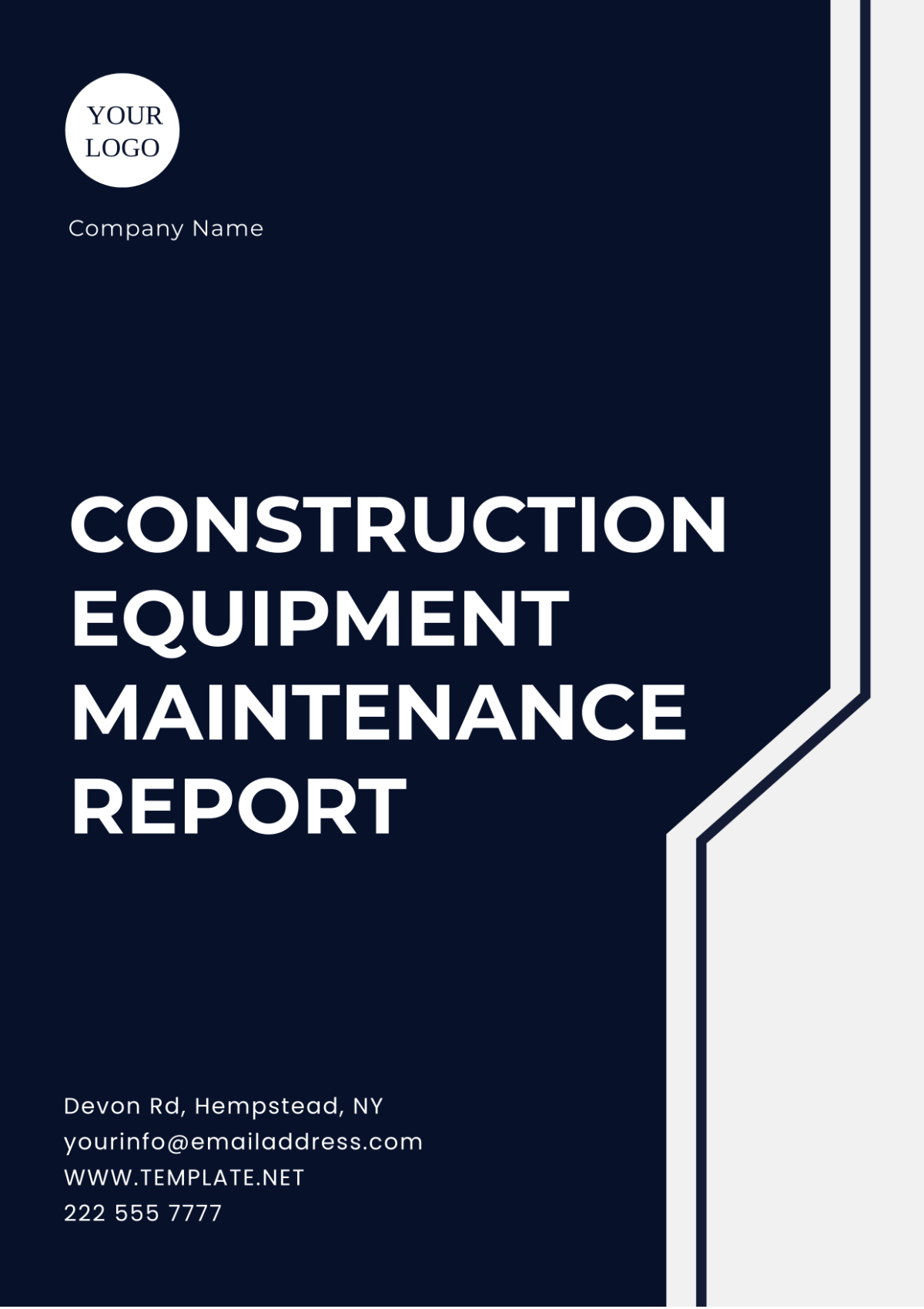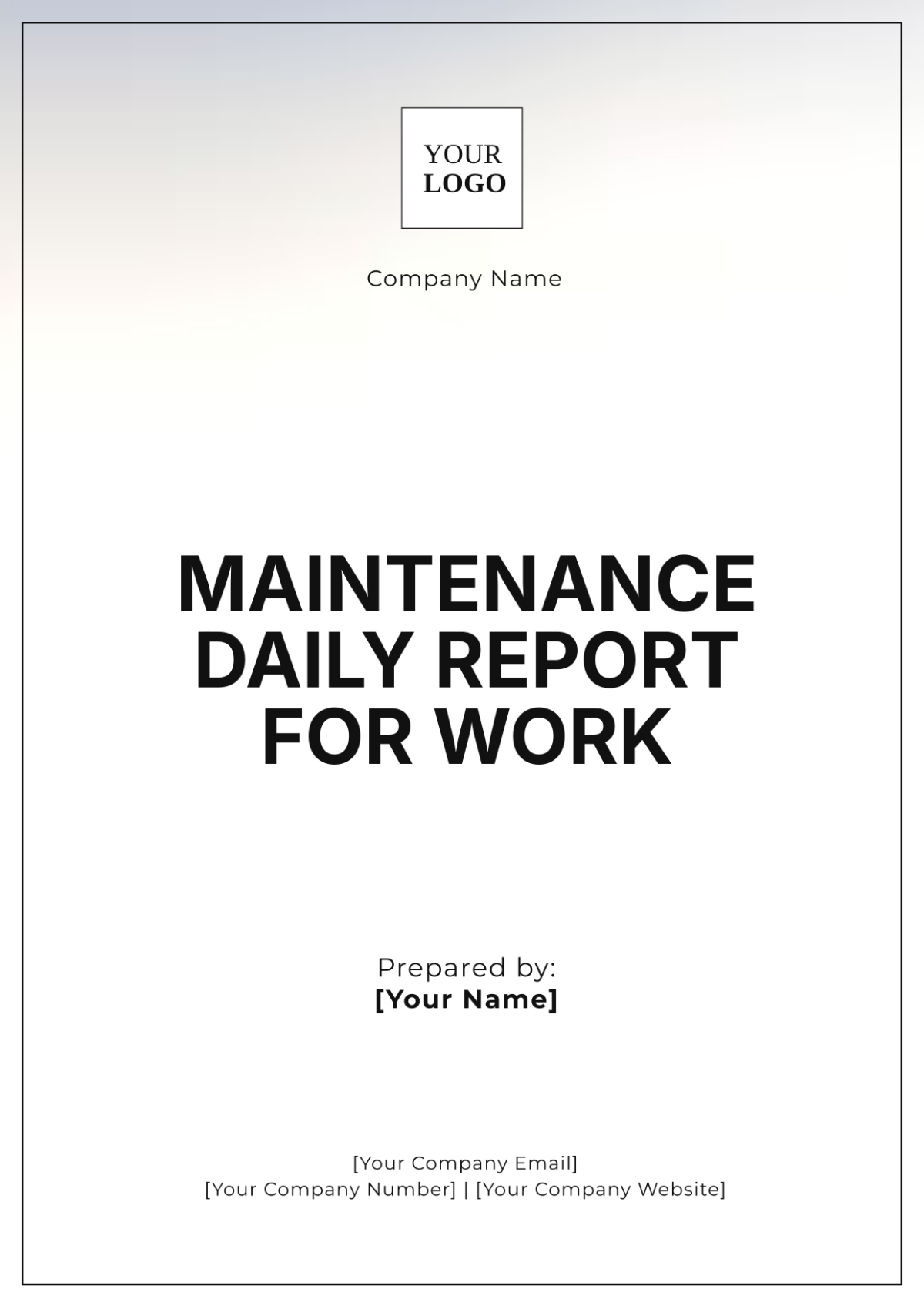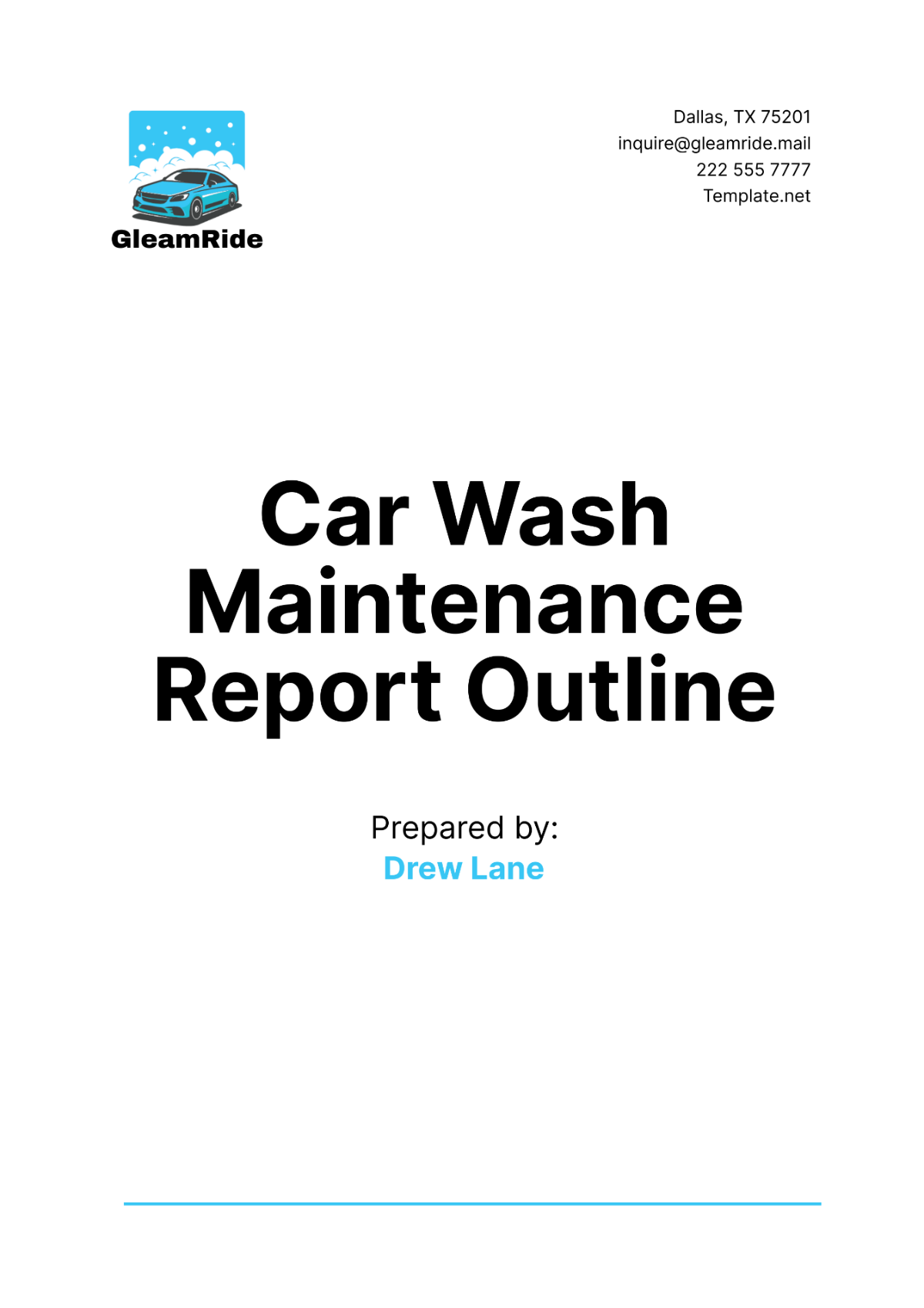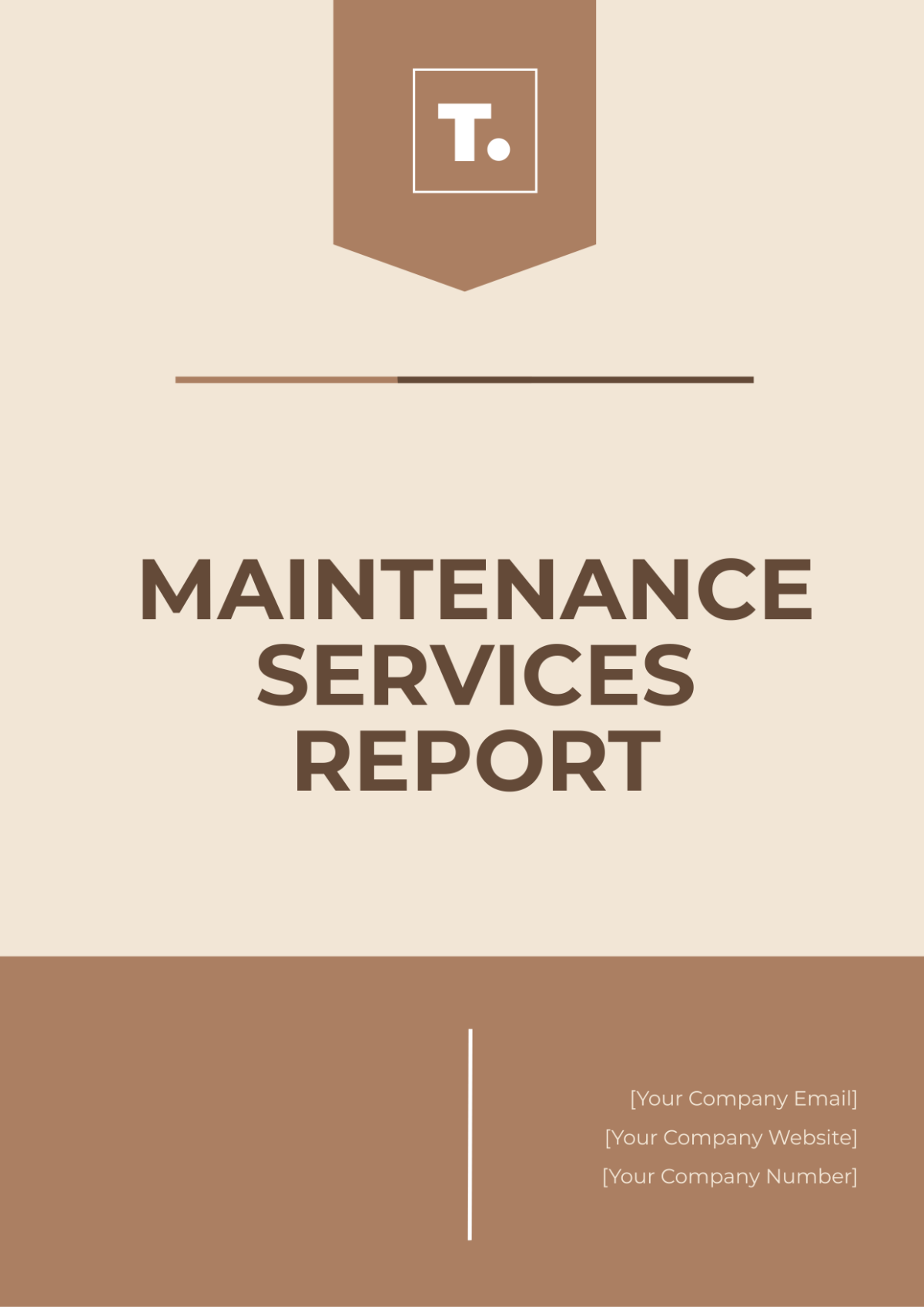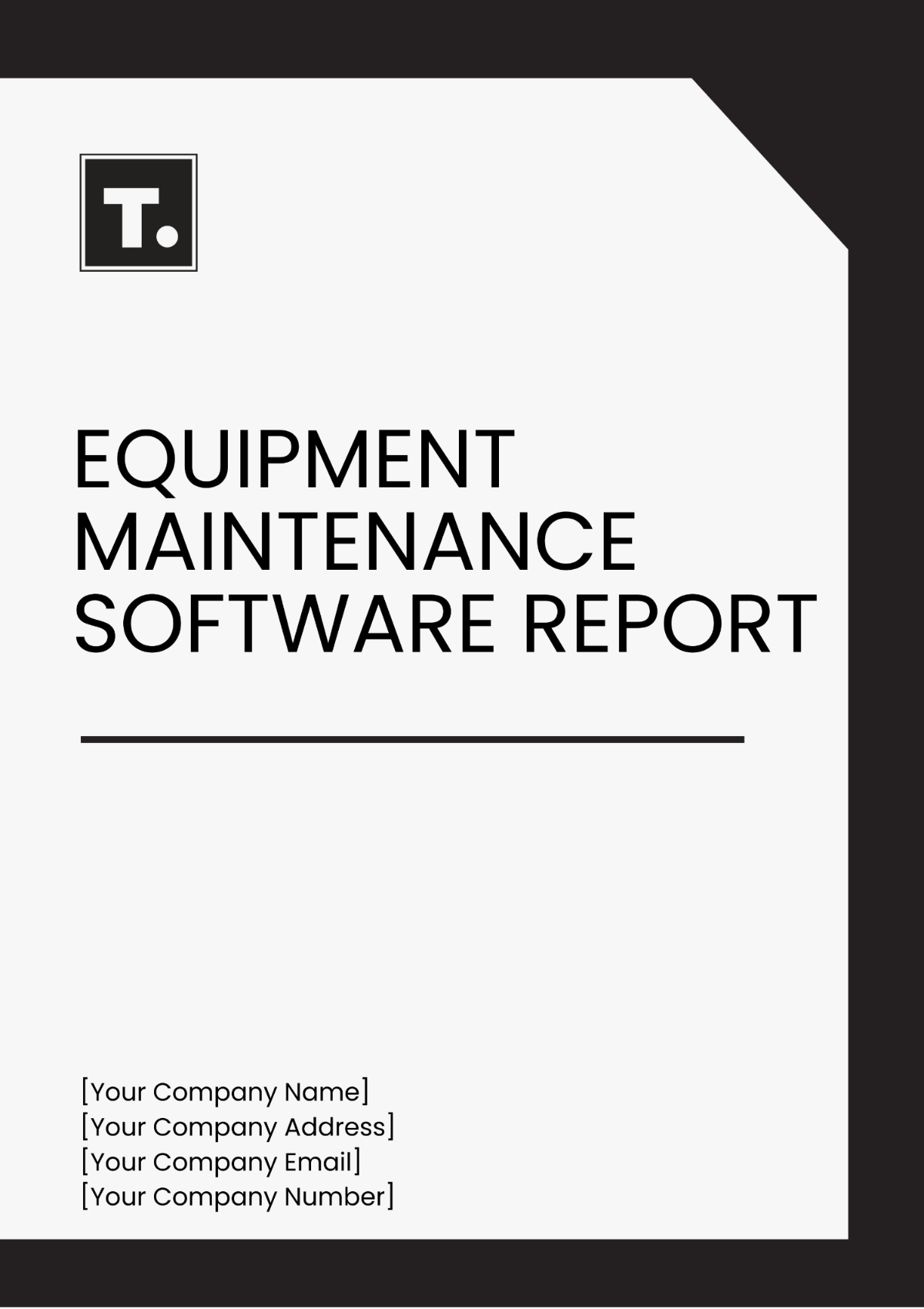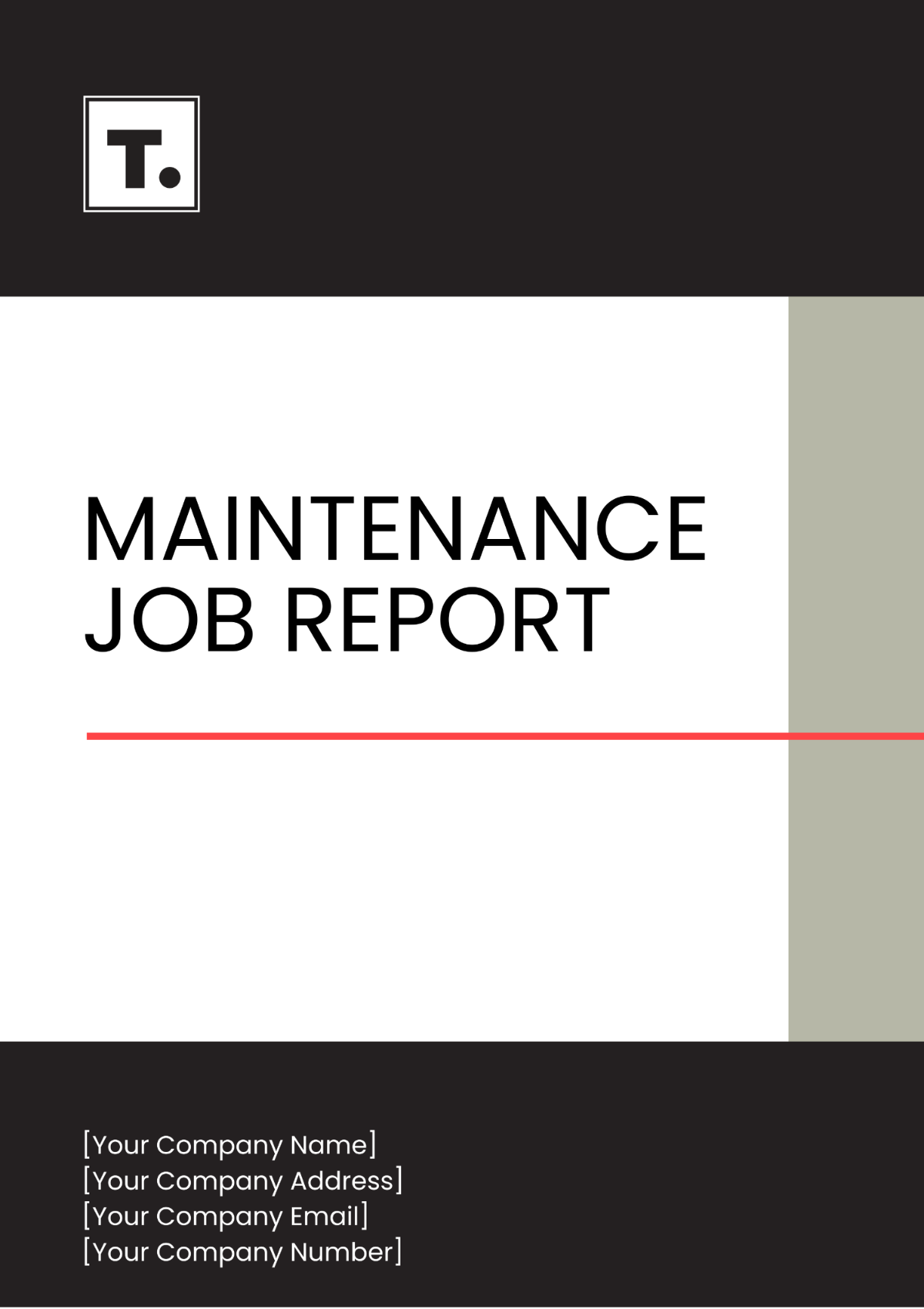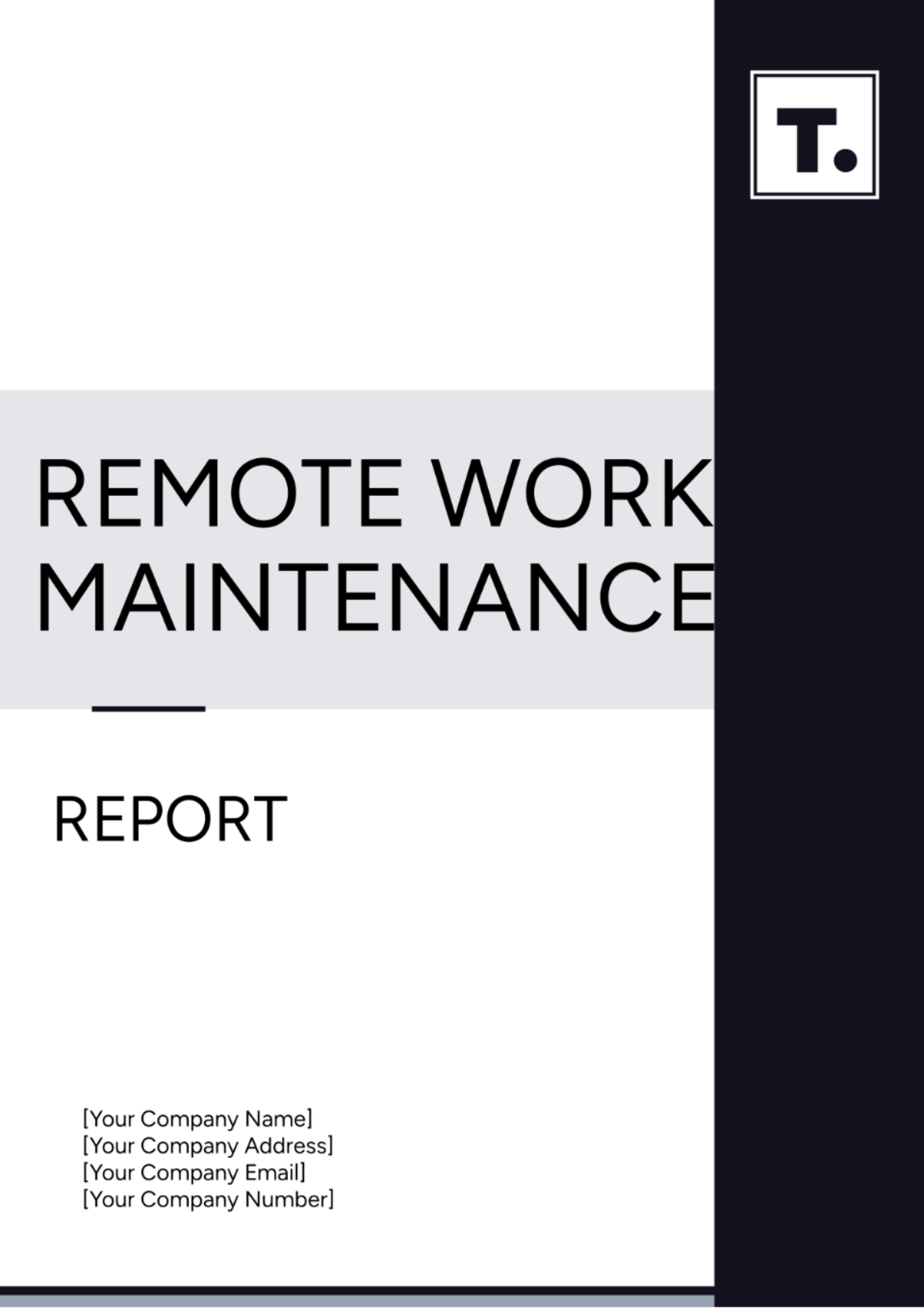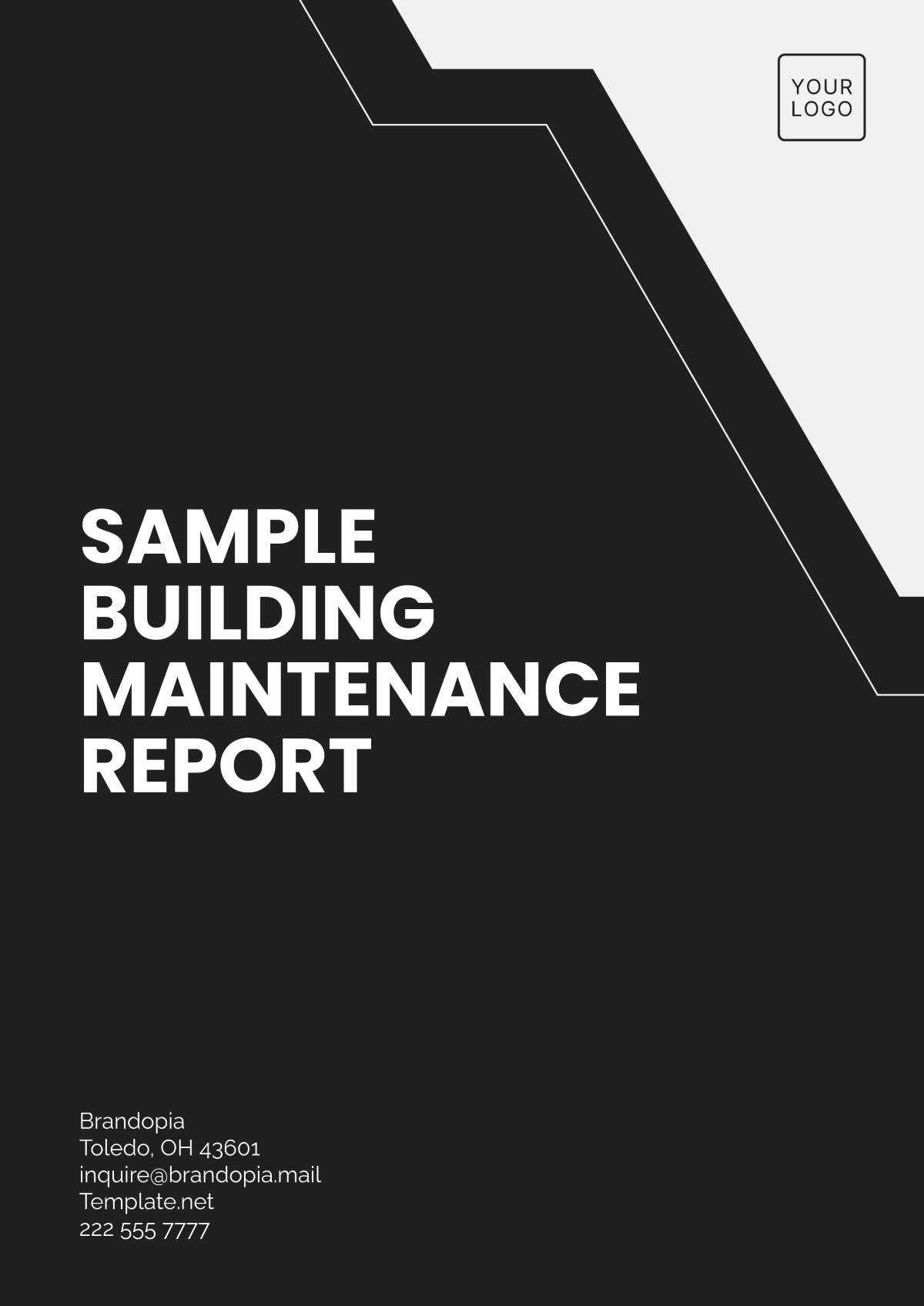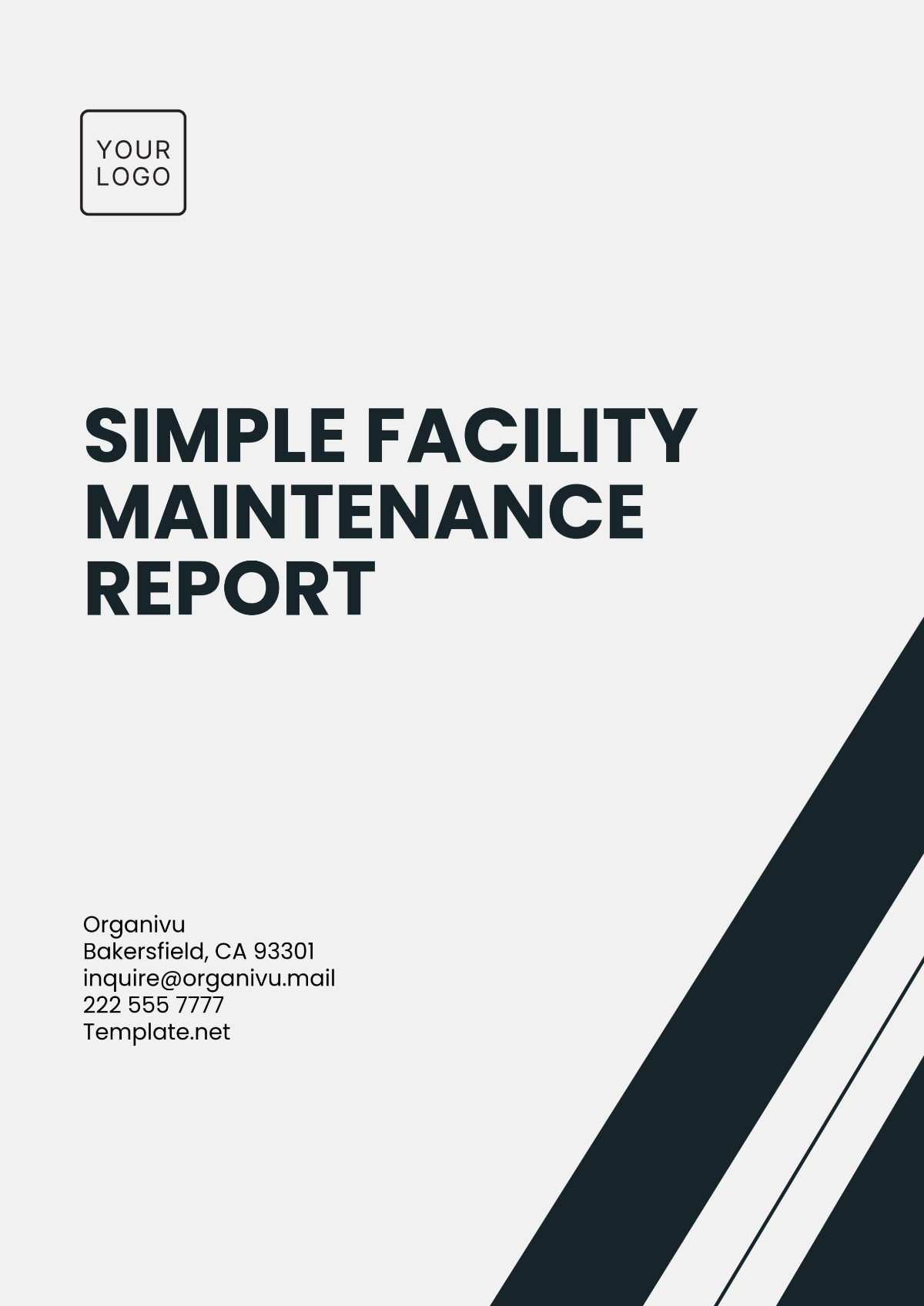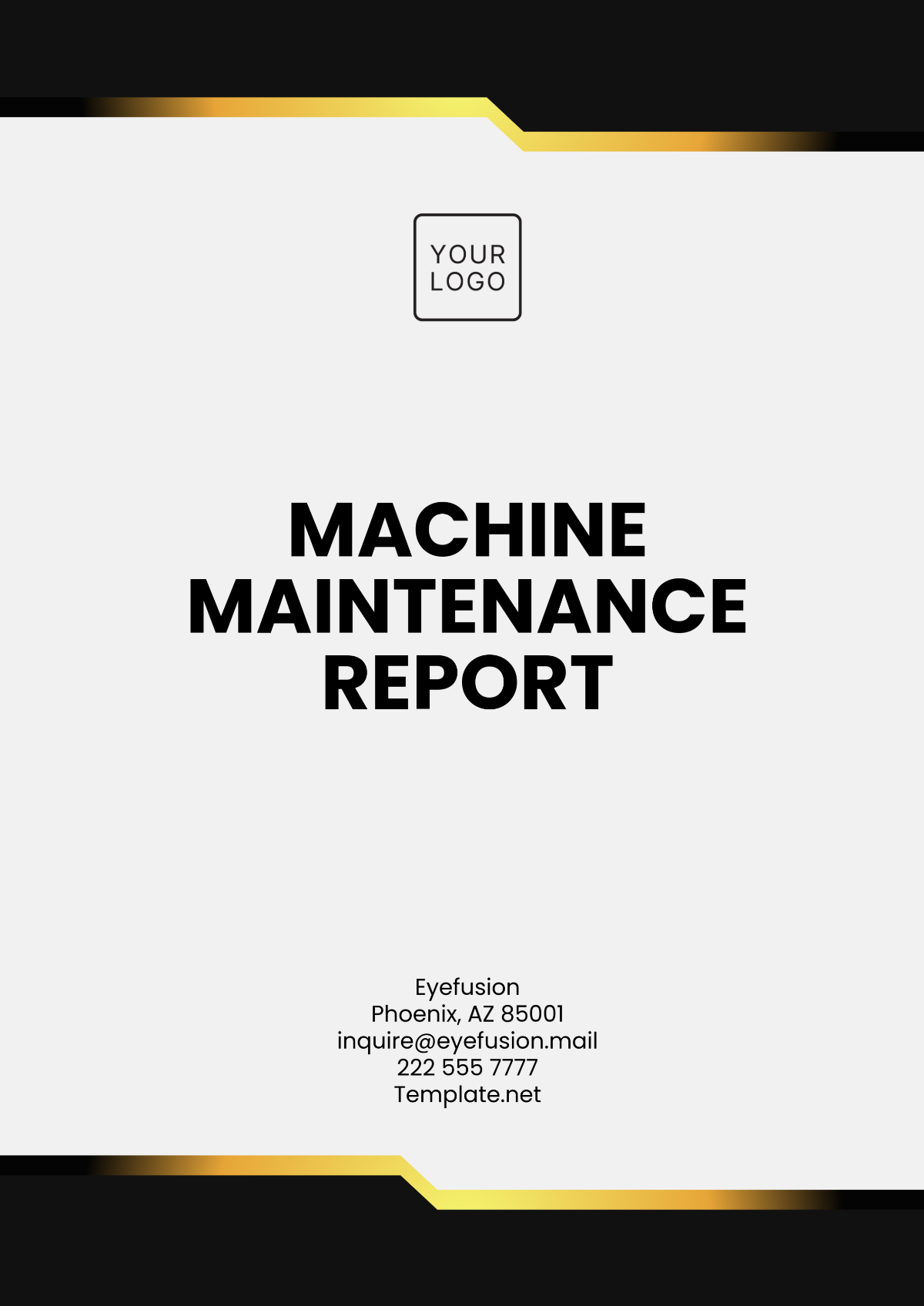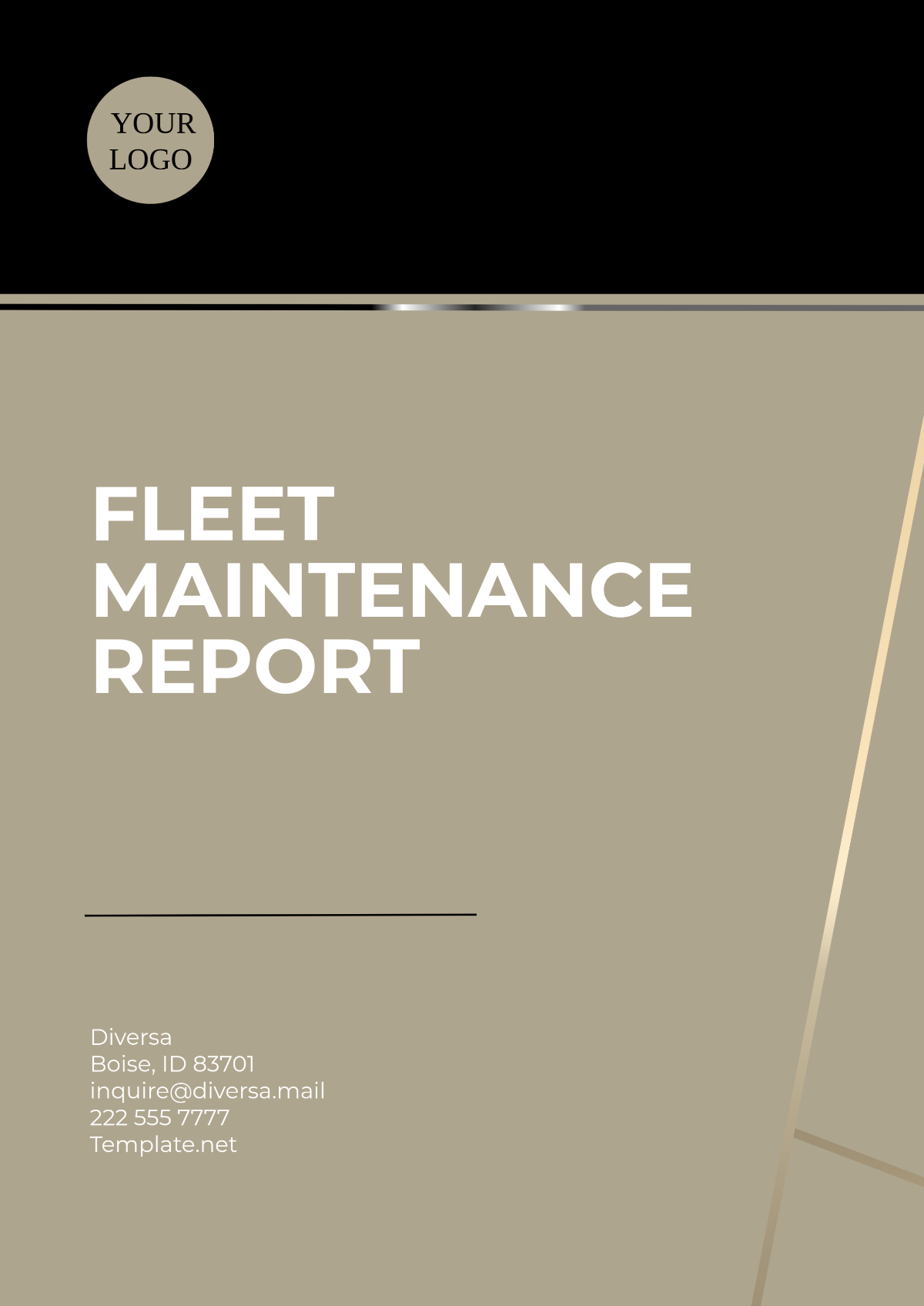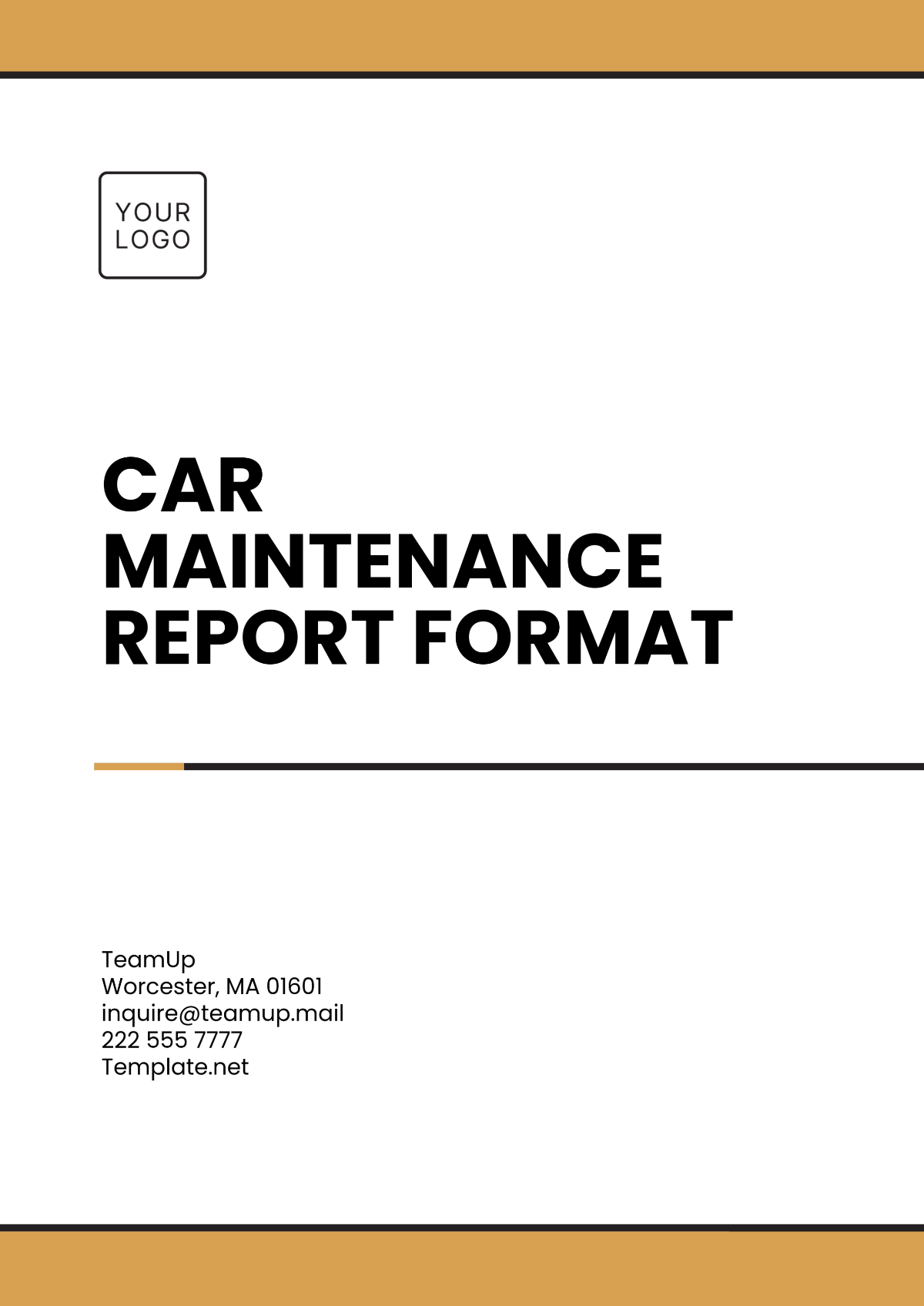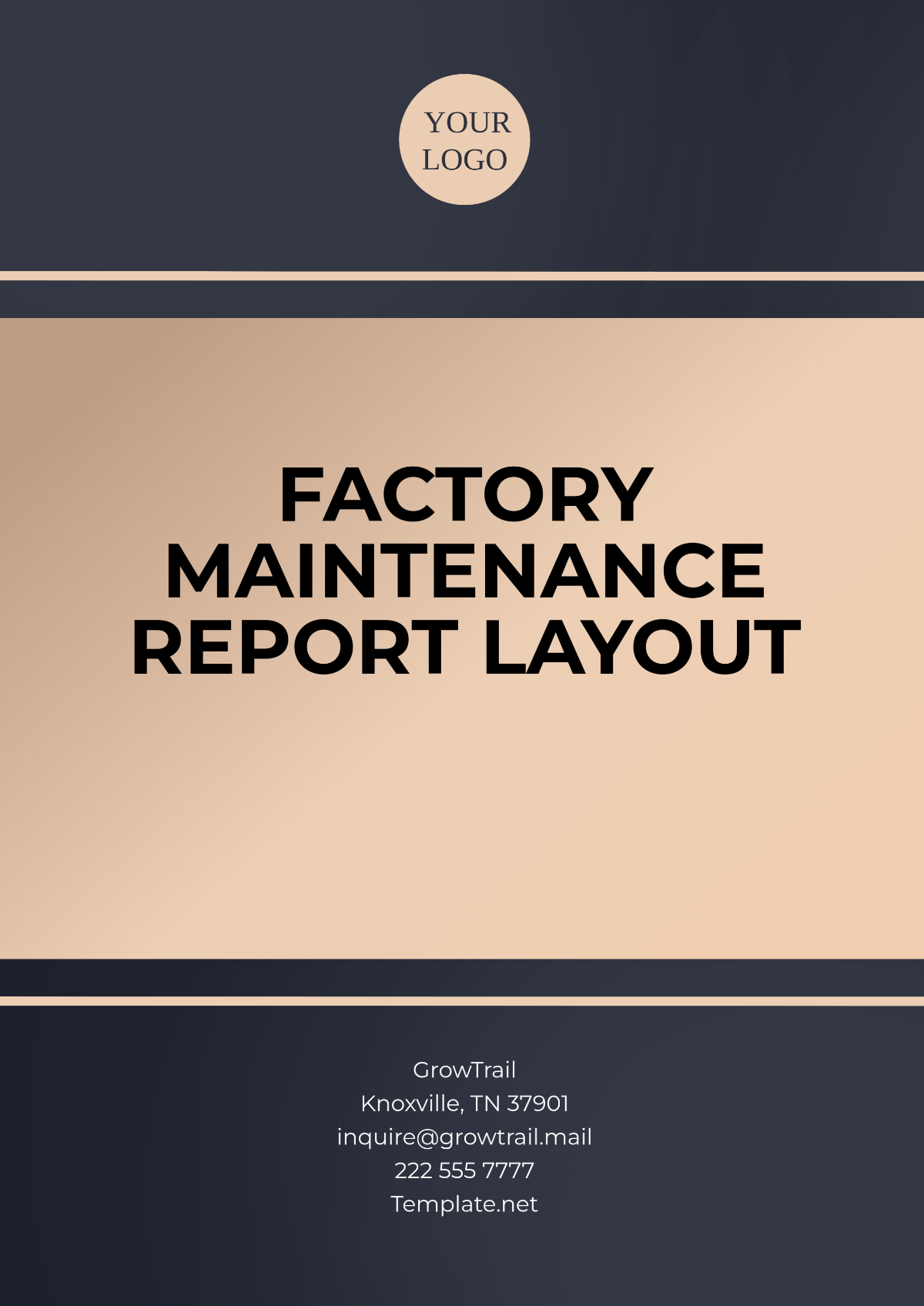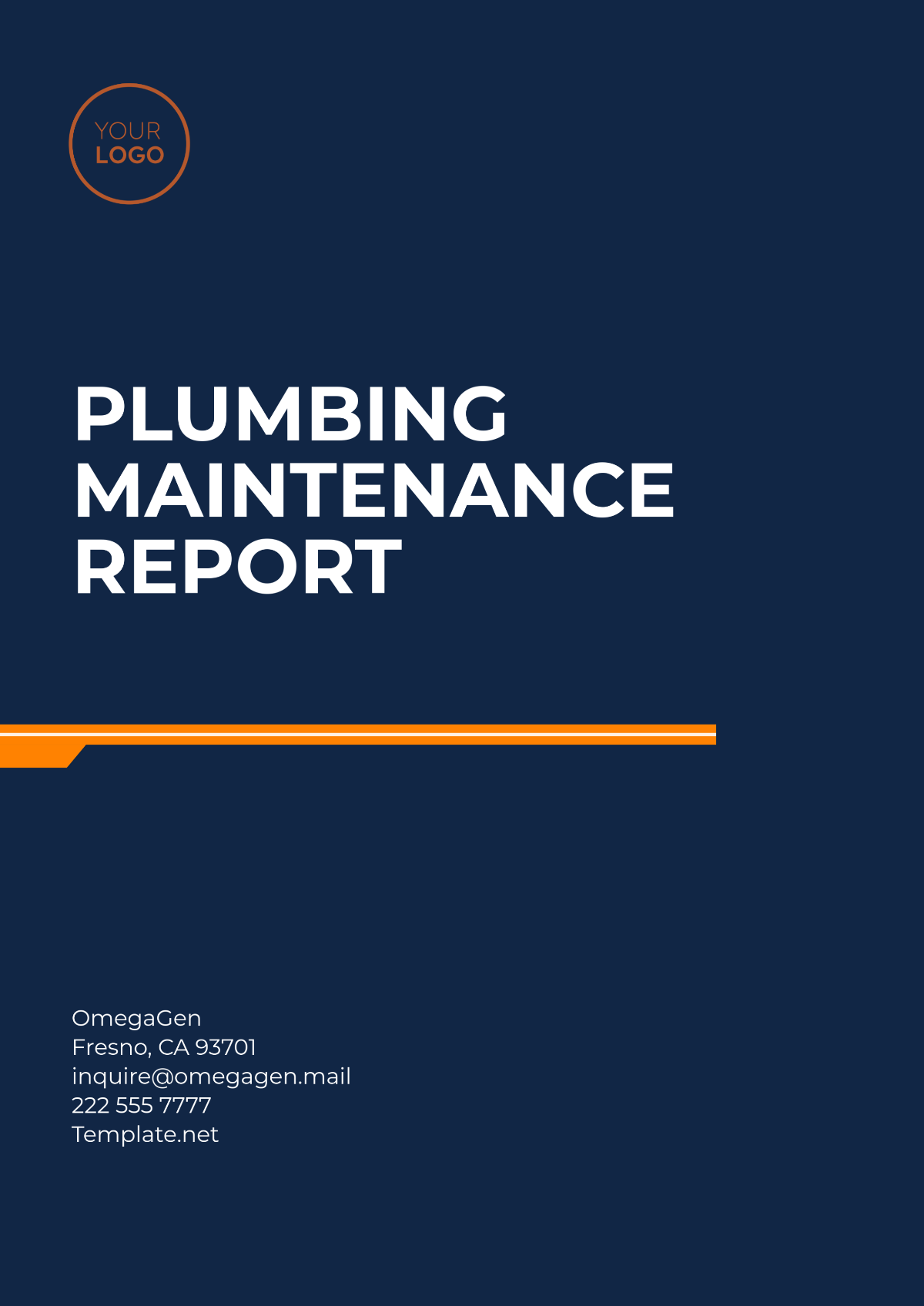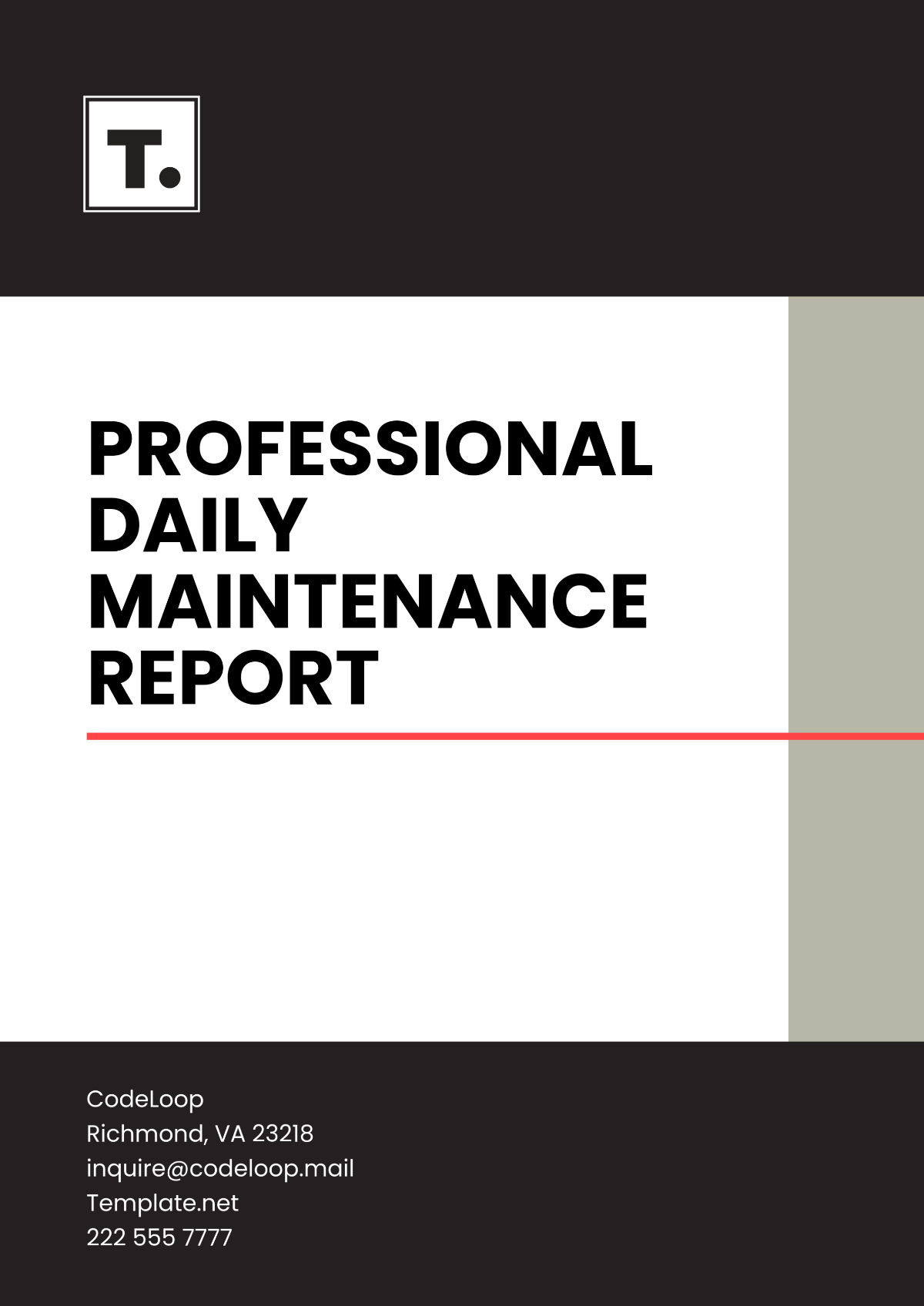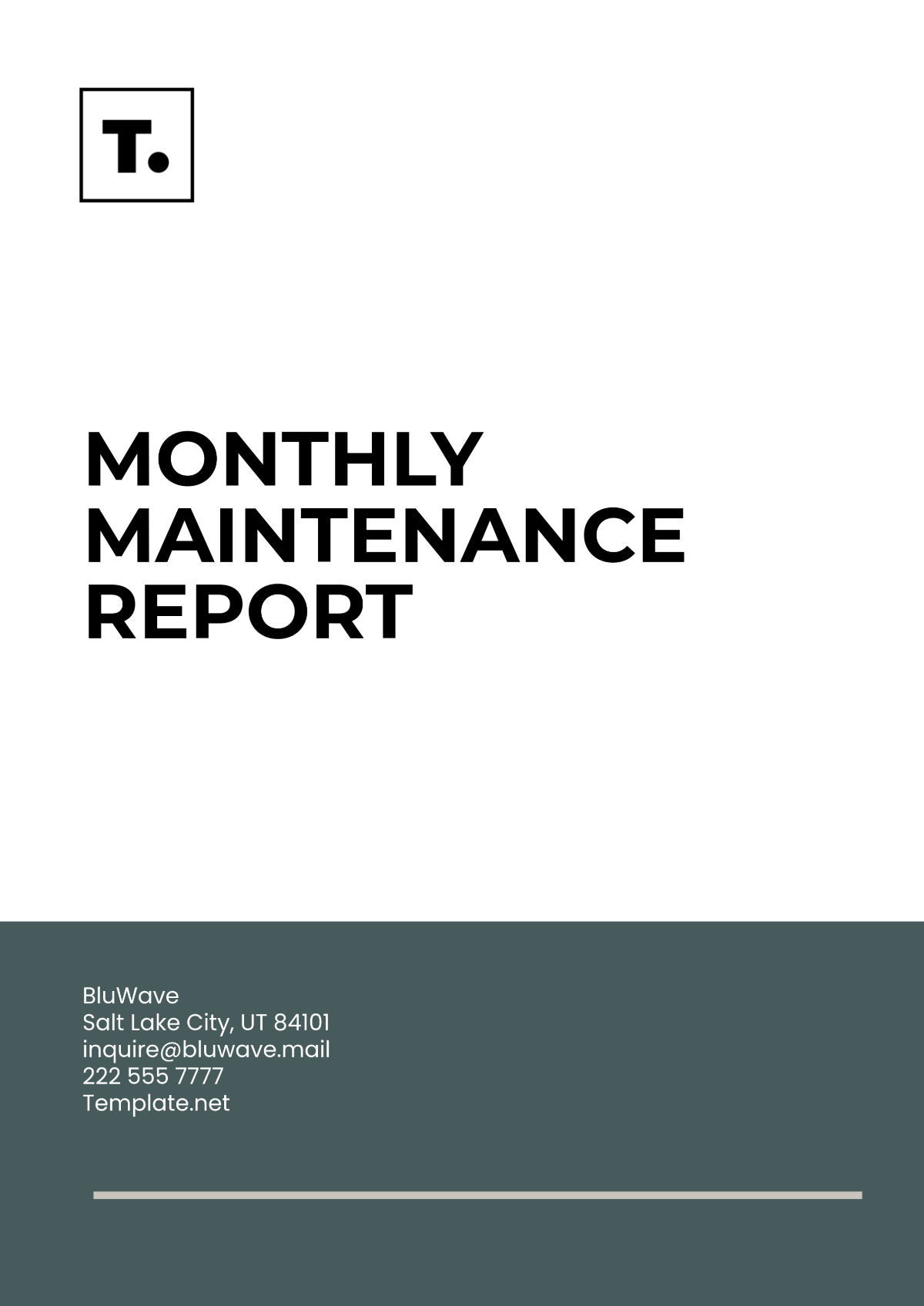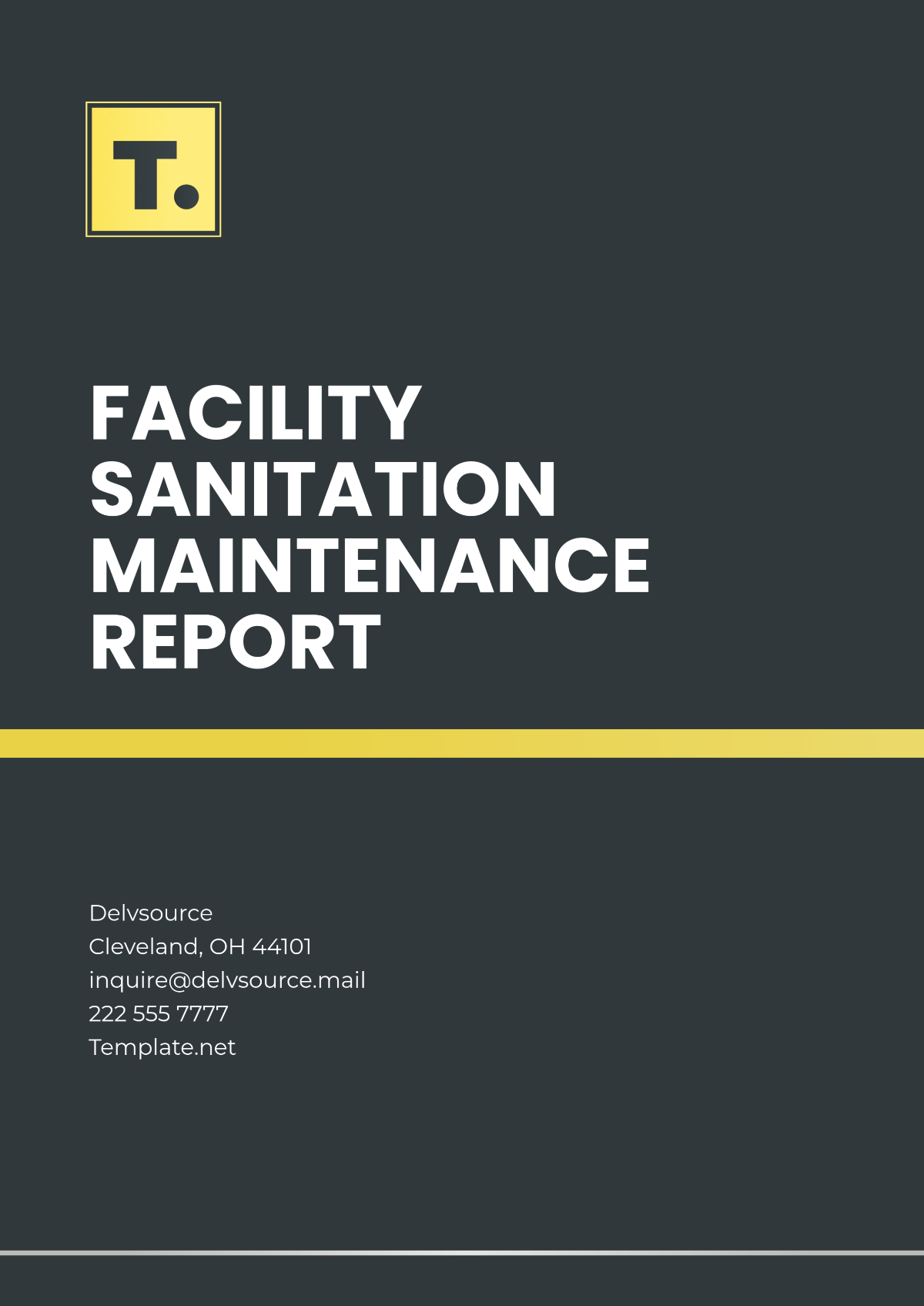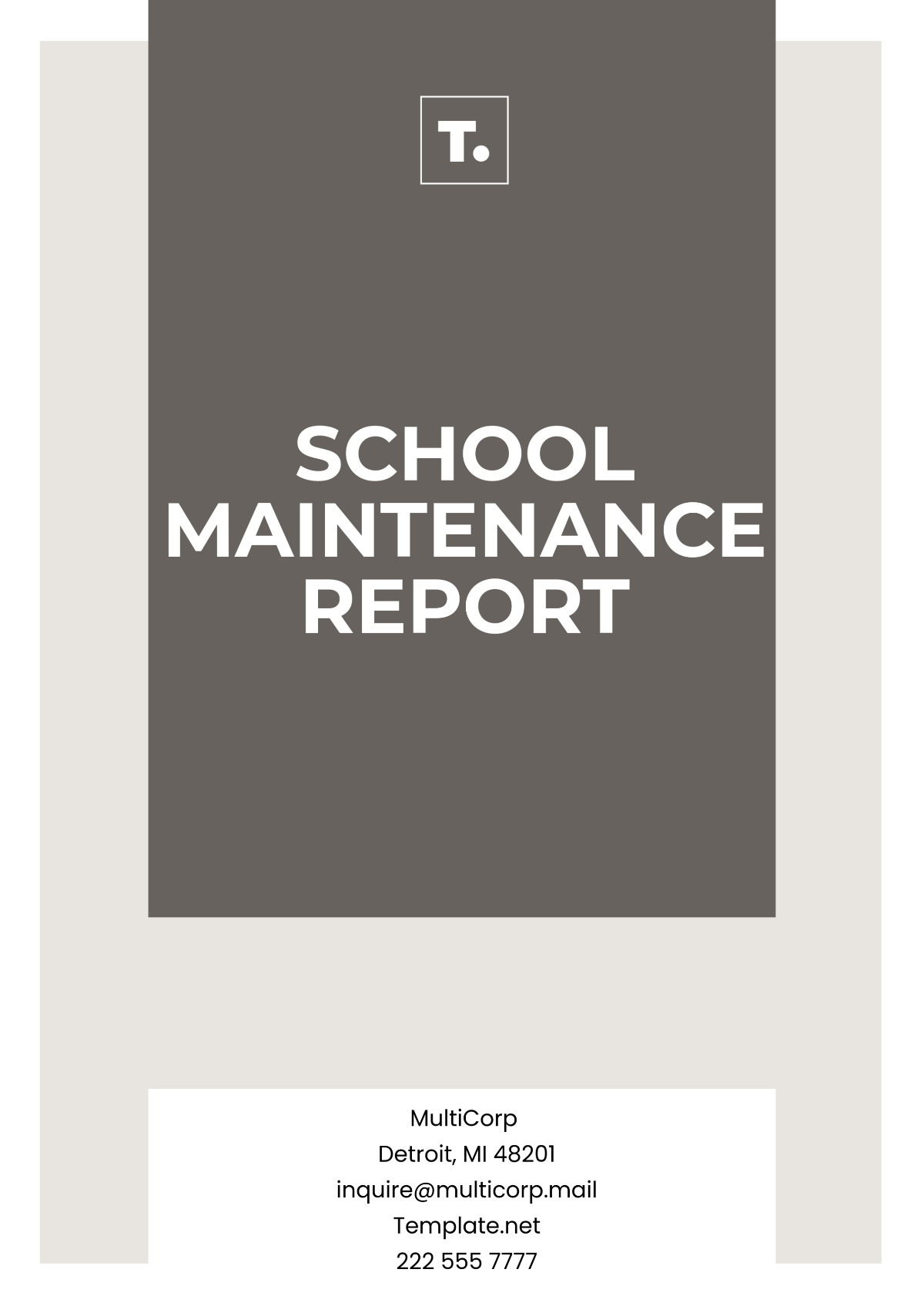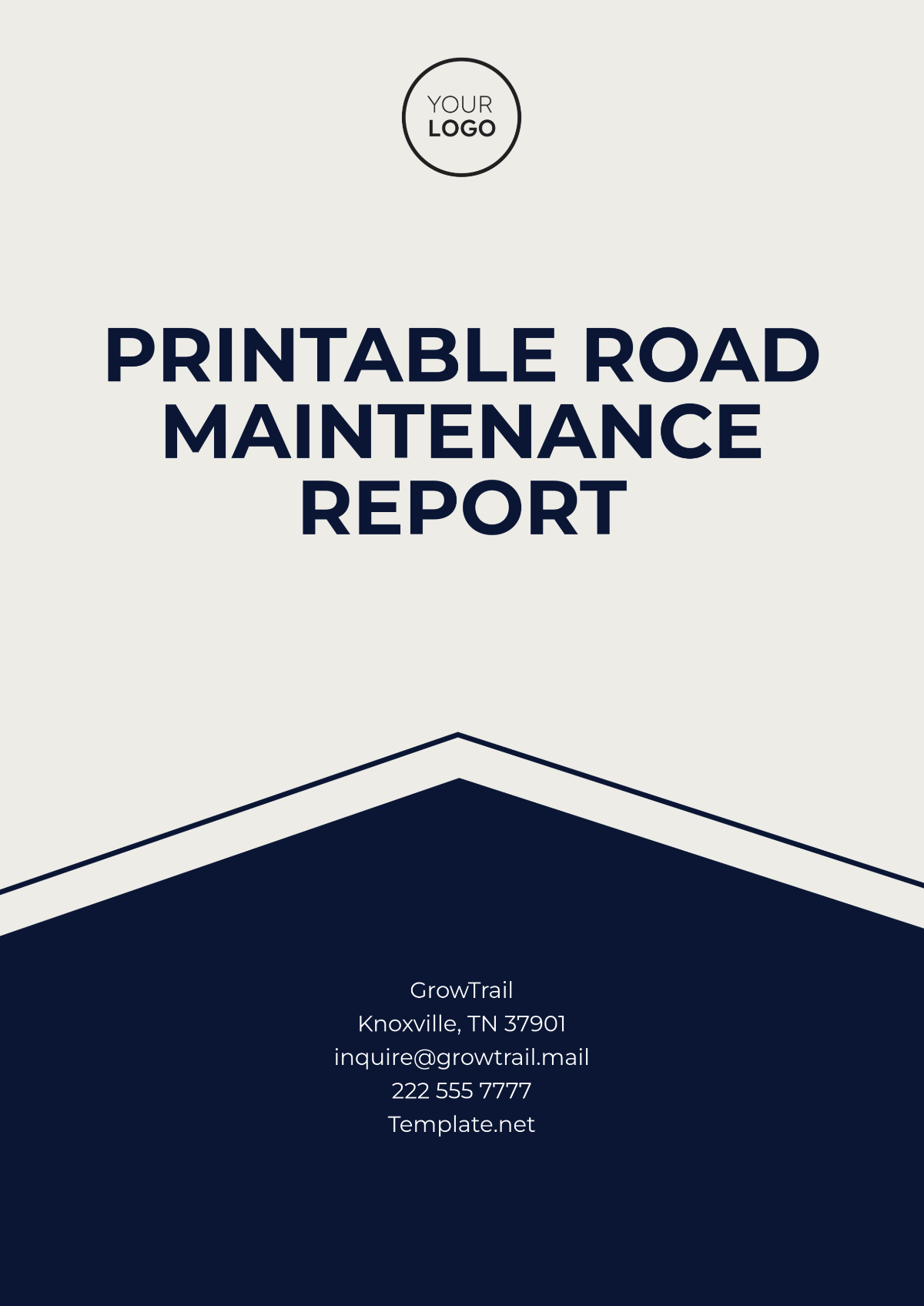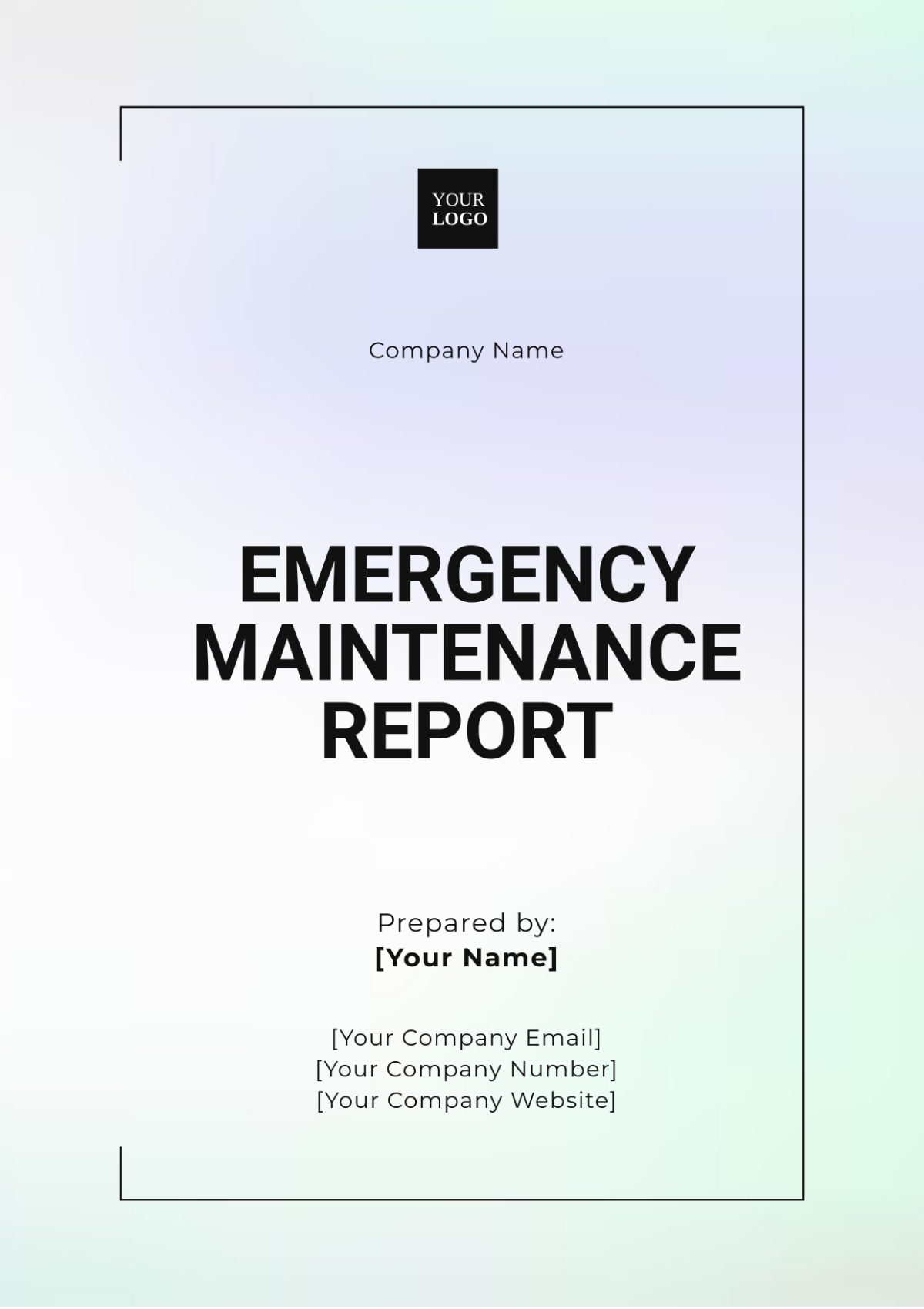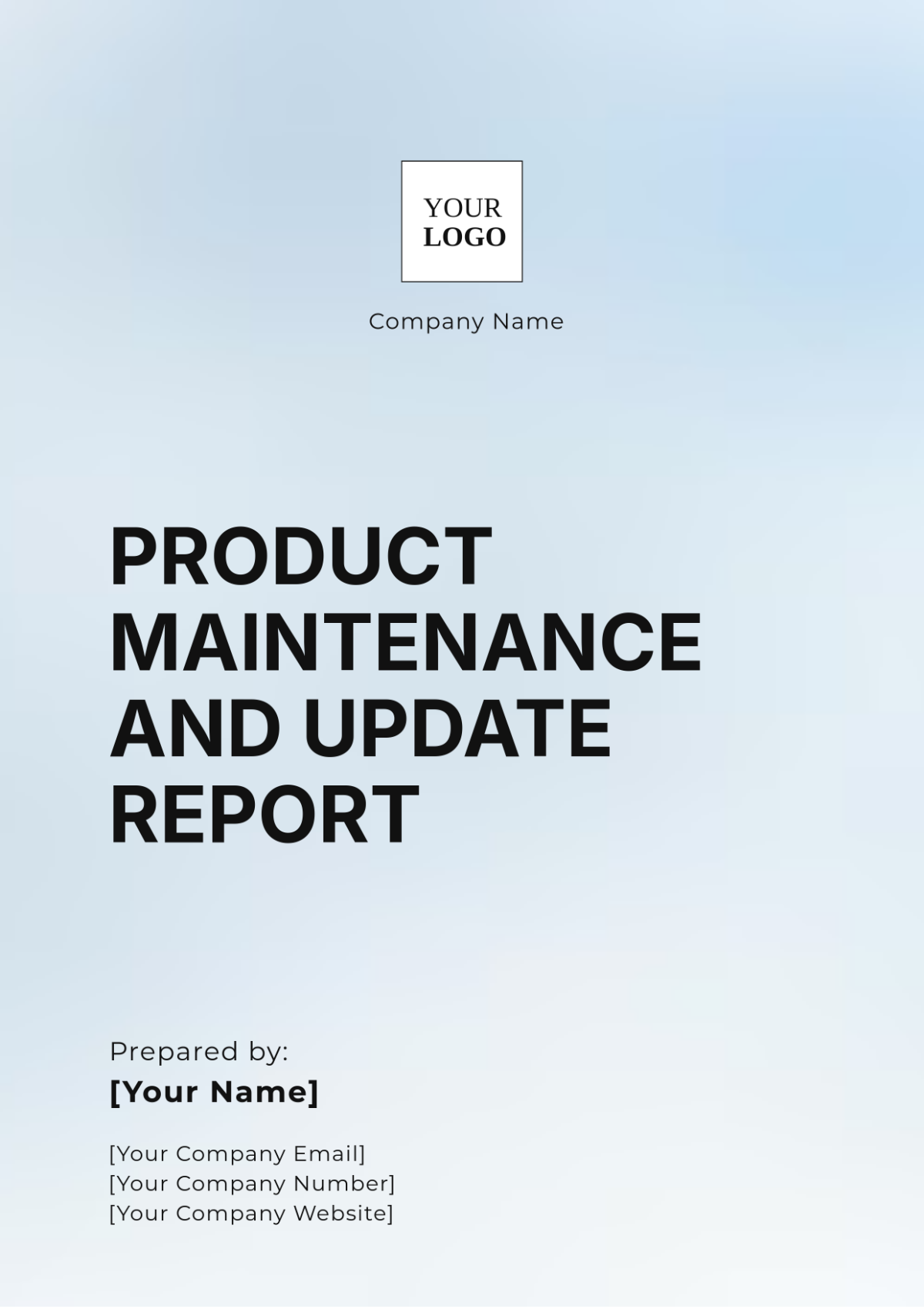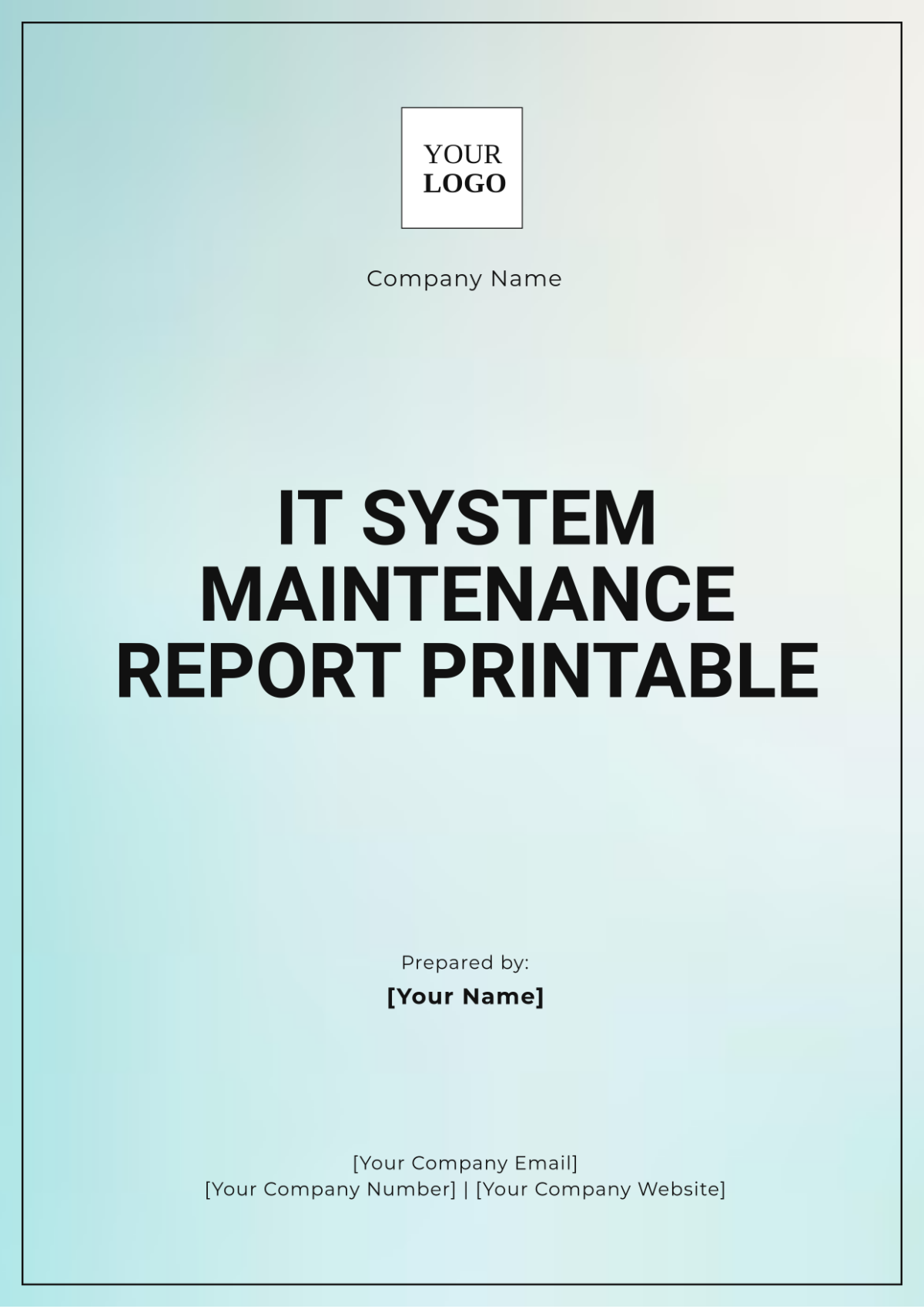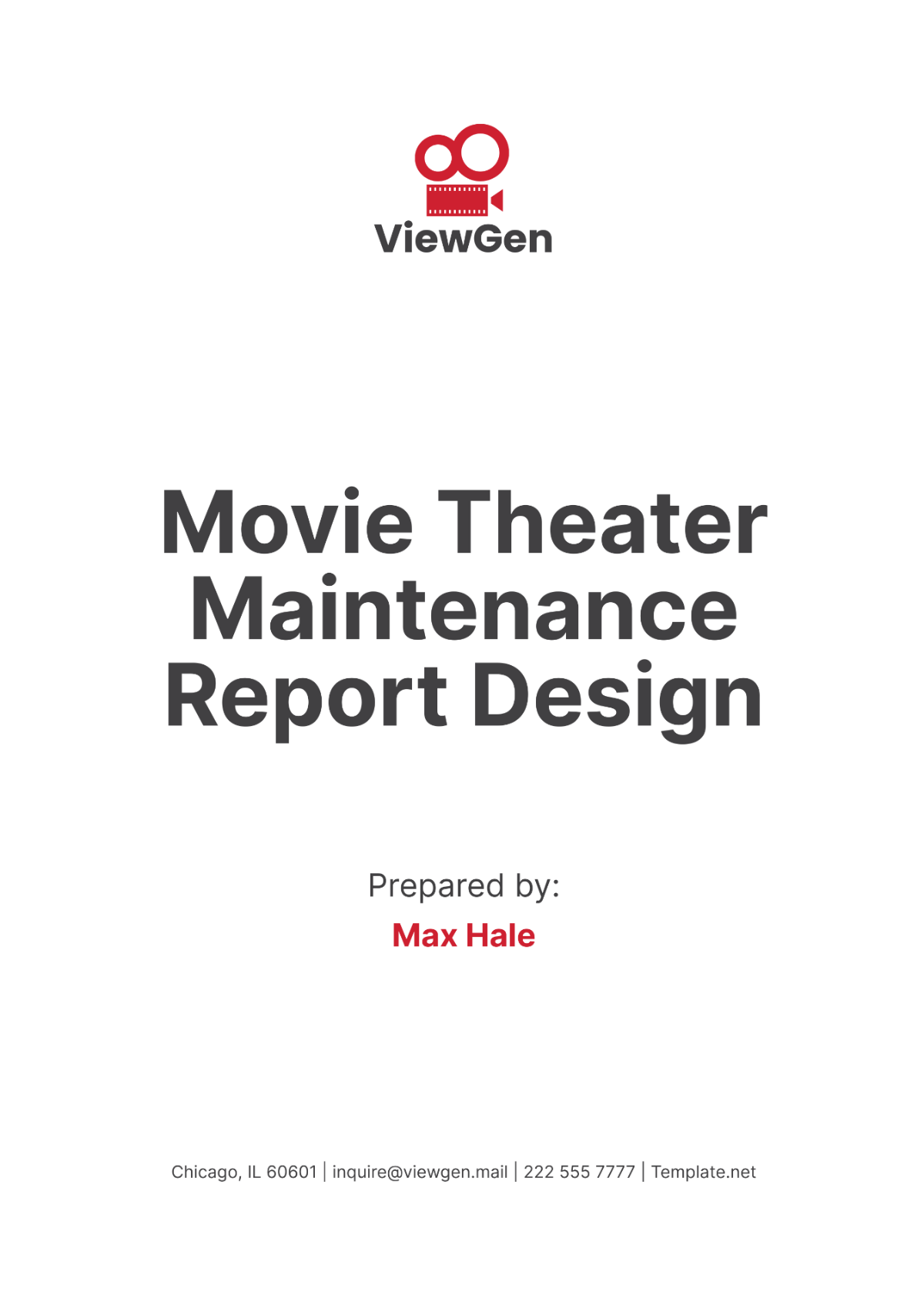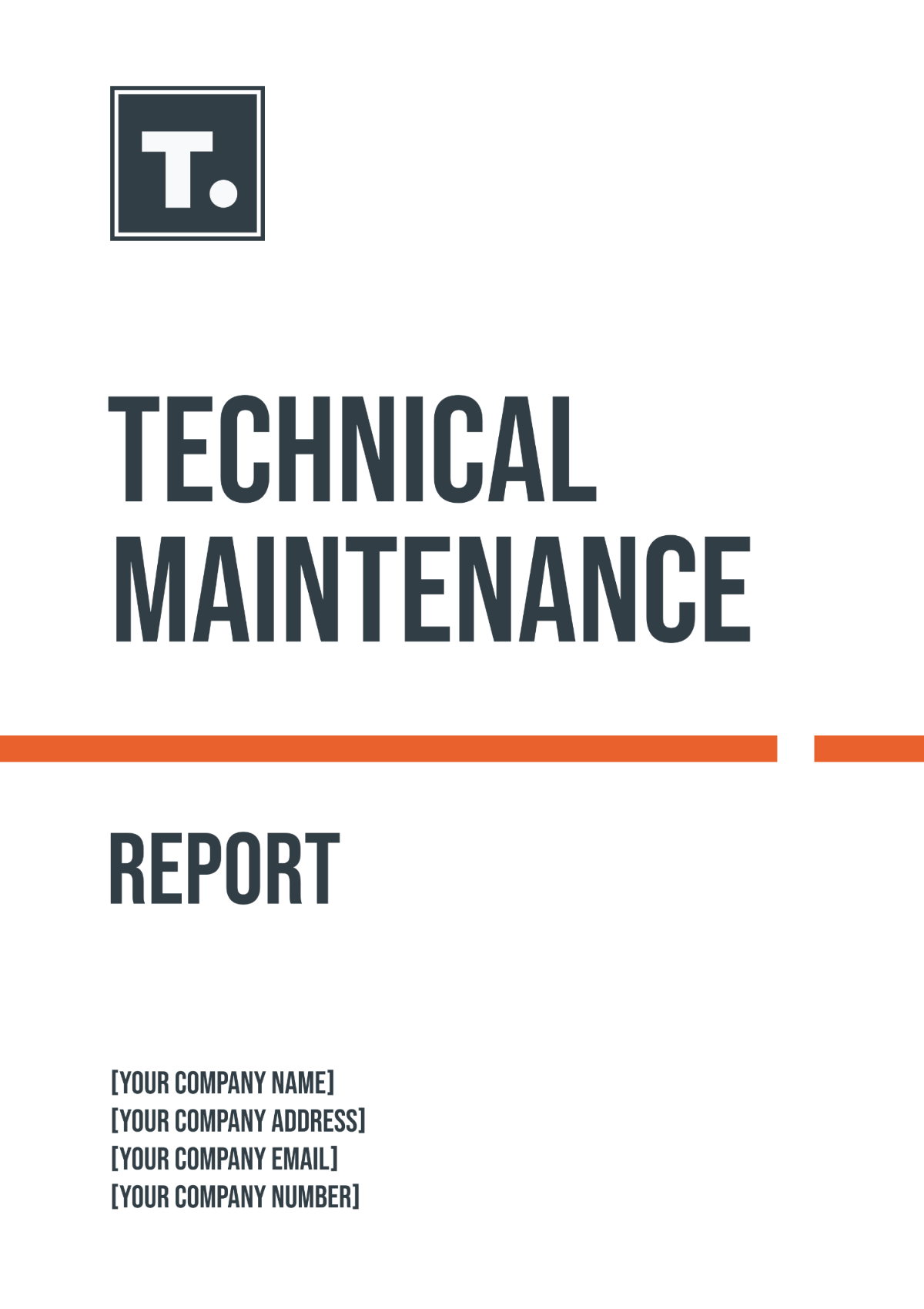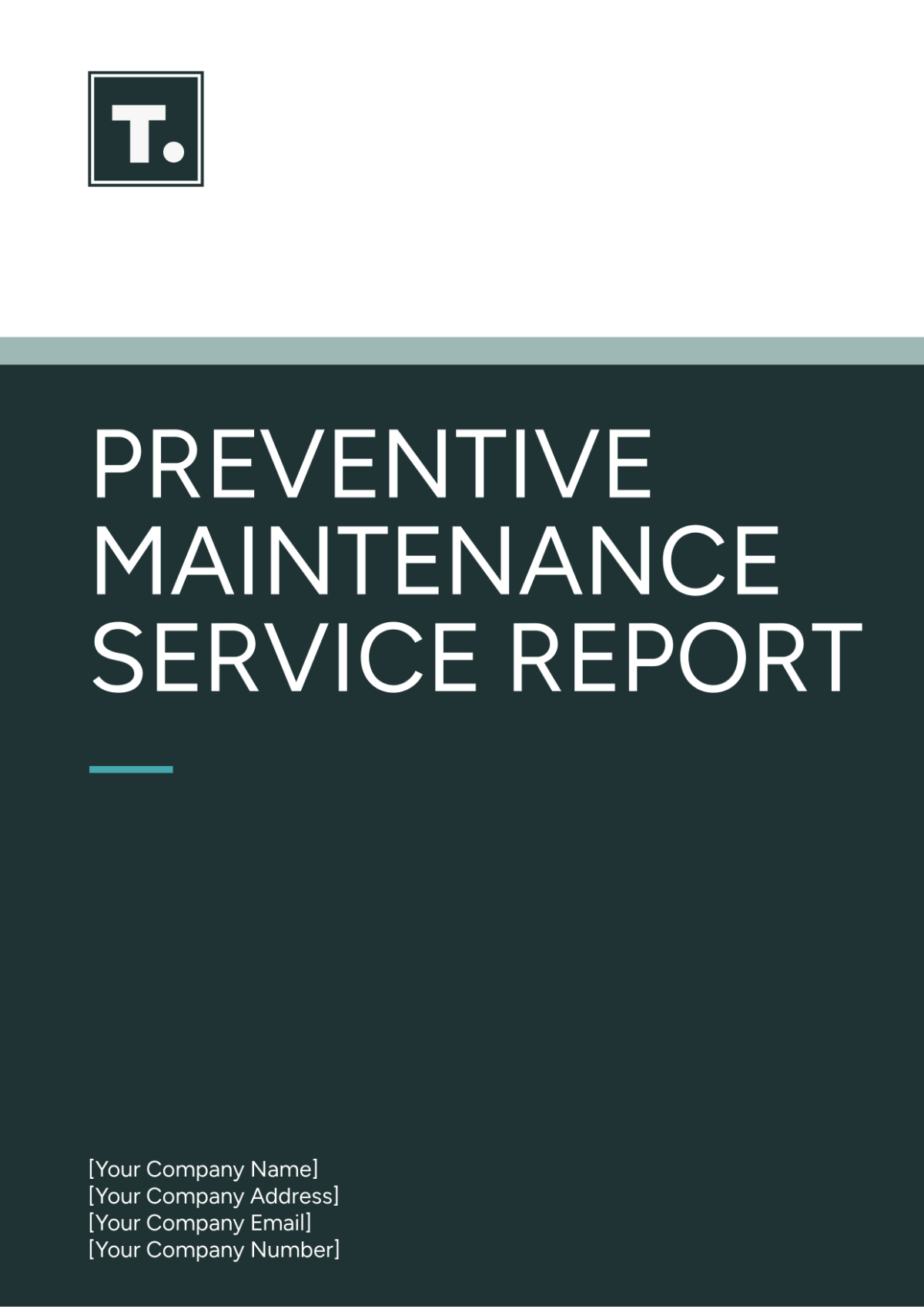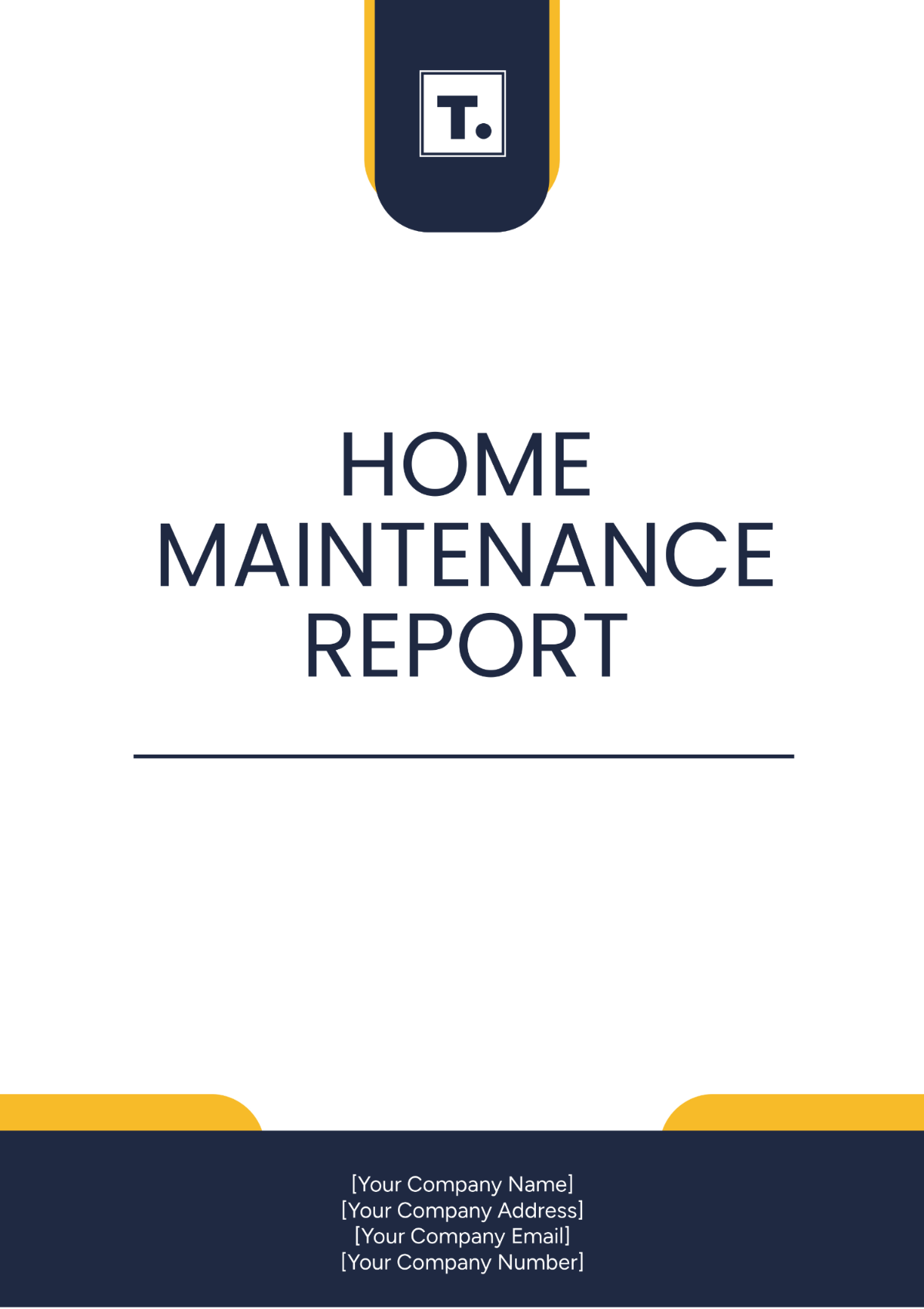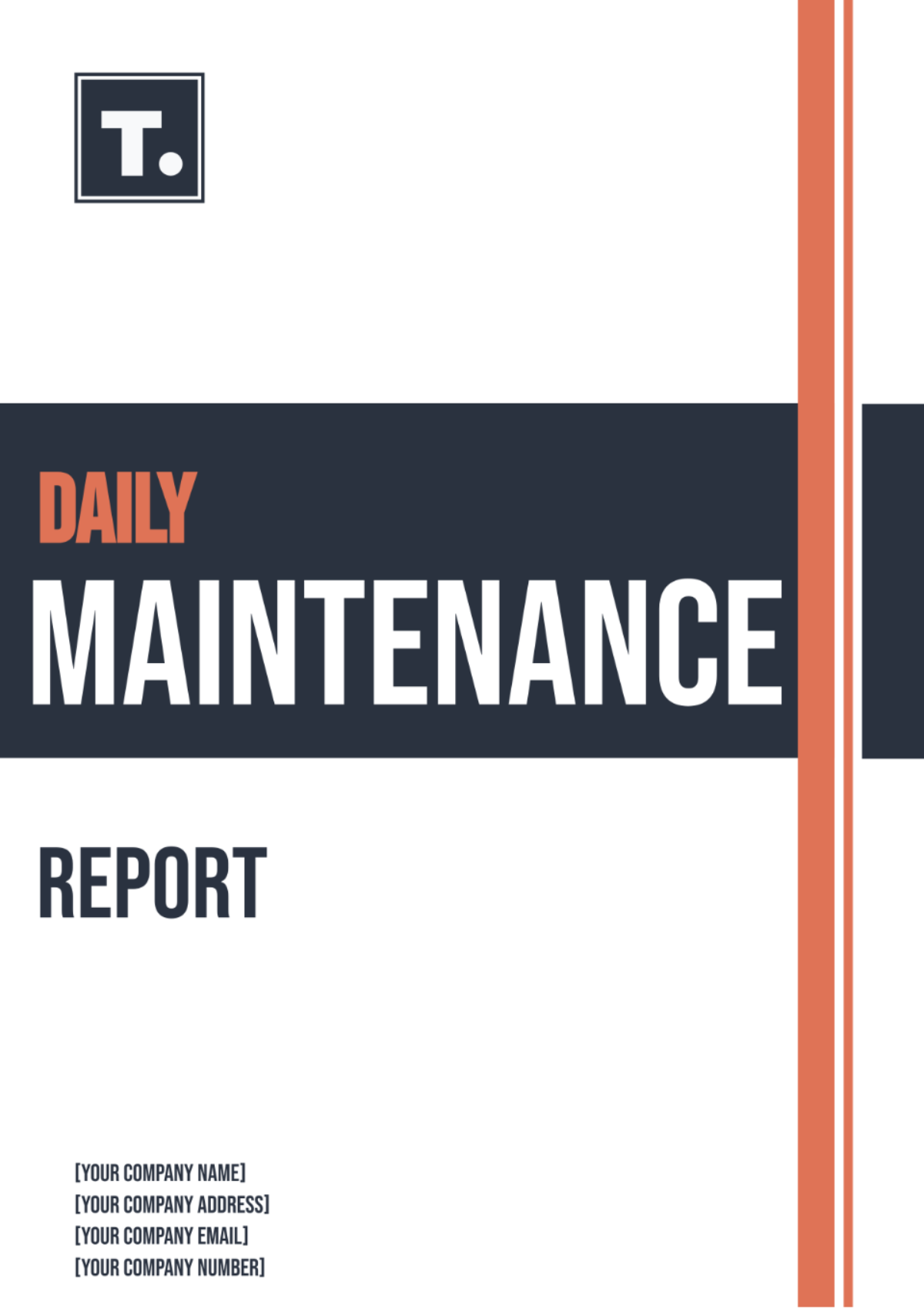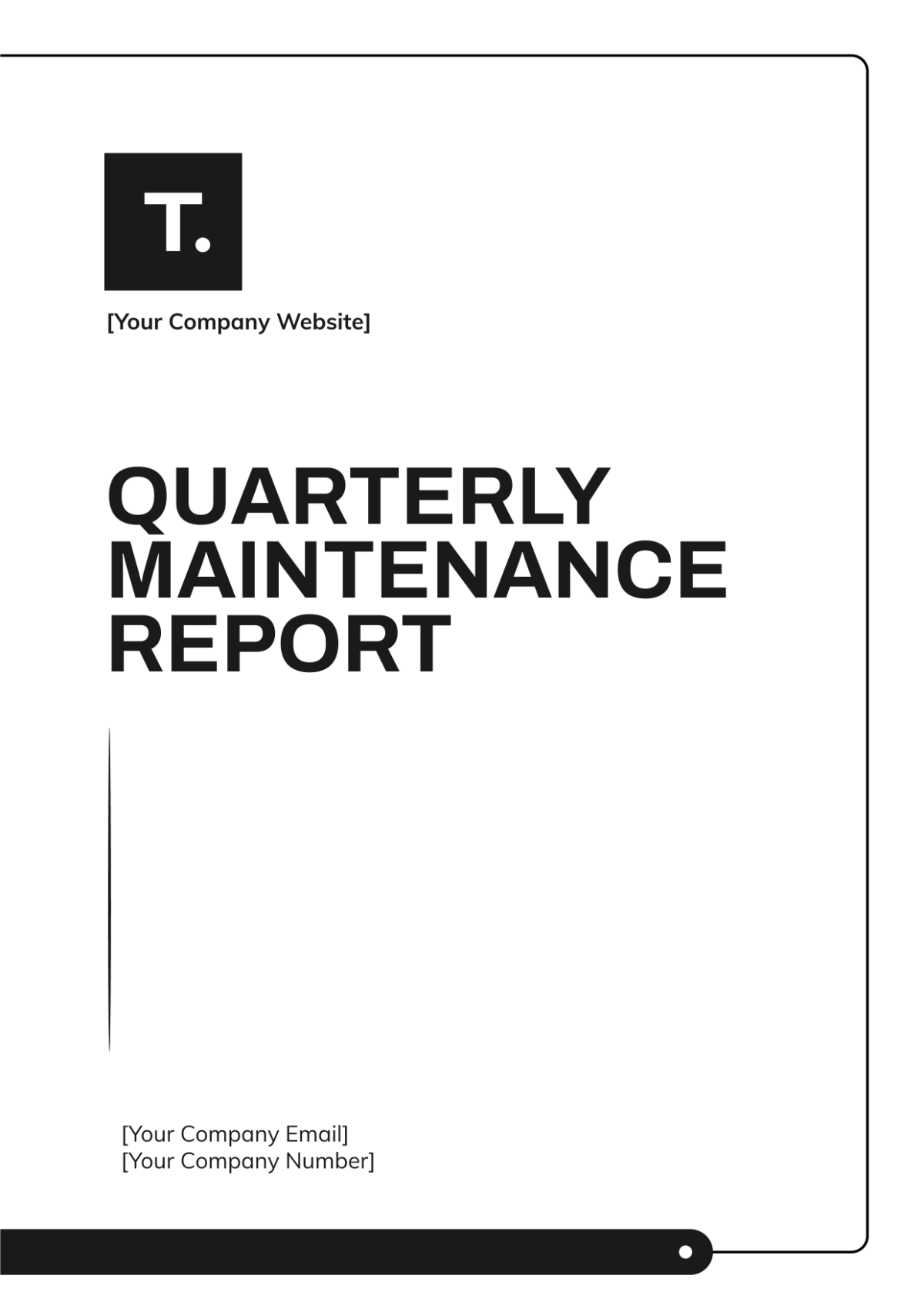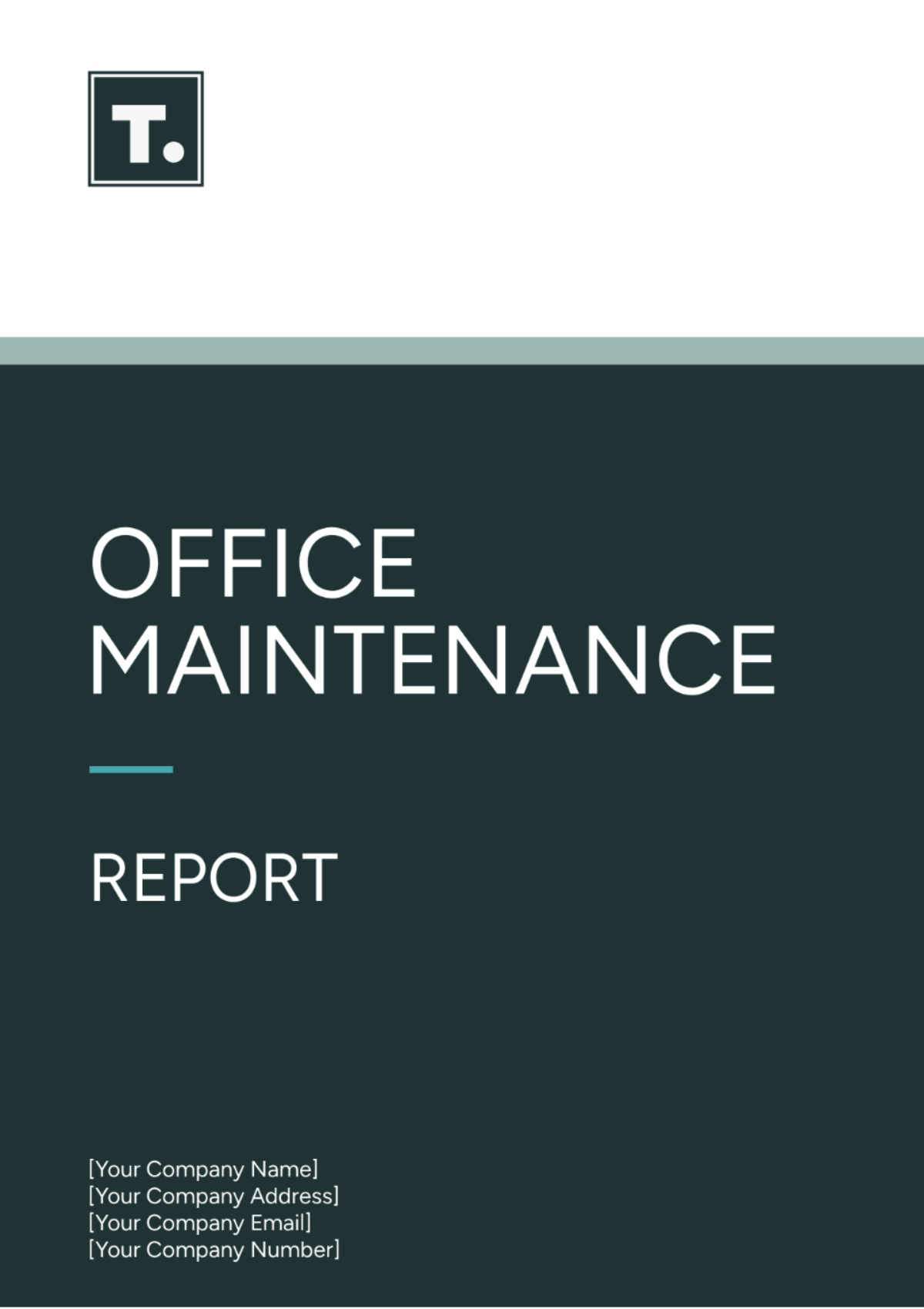Operations Building Maintenance Report
I. Introduction
The Operations Building Maintenance Report aims to document and analyze the maintenance activities conducted within [Your Company Name]'s operations building situated at [Your Company Address]. This report provides an in-depth overview of the maintenance efforts undertaken to ensure the safety, functionality, and longevity of the building's infrastructure.
A. Purpose of the Report
The primary objective of this report is to assess the effectiveness of the maintenance operations carried out during the reporting period. By examining the maintenance activities comprehensively, stakeholders can gain insights into the condition of the building and identify areas for improvement. Additionally, this report serves as a tool for tracking maintenance history and planning future maintenance initiatives.
B. Scope of Maintenance Activities
The scope of maintenance activities covered in this report encompasses various aspects of building maintenance, including but not limited to:
HVAC systems maintenance
Electrical systems maintenance
Plumbing systems maintenance
Structural maintenance
Interior maintenance
Exterior maintenance
Safety and compliance checks
C. Overview of the Building
The operations building, occupying [425 square feet/meters] and comprising [64] floors, serves as a critical infrastructure hub for [Your Company Name]. Housing [20 offices/departments], the building accommodates essential operations and personnel vital to the company's functioning. Understanding the building's layout and purpose is fundamental to assessing its maintenance needs and ensuring uninterrupted operations.
II. Maintenance Overview
A. Summary of Maintenance Activities Conducted
Throughout the reporting period, the maintenance team diligently executed a range of maintenance tasks to uphold the building's operational efficiency and safety standards. The following table outlines the key maintenance activities undertaken:
Maintenance Category | Activities Performed |
|---|---|
HVAC Systems | Inspection, cleaning, and repair of HVAC units and ductwork |
Electrical Systems | Wiring inspections, fixture replacements, and safety checks |
Plumbing Systems | Pipe inspections, fixture repairs, and drain cleaning |
Structural Maintenance | Roof inspections, wall repairs, and foundation reinforcement |
Interior Maintenance | Flooring repairs, wall painting, and door/window maintenance |
Exterior Maintenance | Facade cleaning, landscaping, and parking lot maintenance |
Safety and Compliance | Fire alarm tests, accessibility audits, and safety drills |
B. Maintenance Schedule Adherence
Despite encountering unforeseen challenges such as inclement weather, the maintenance team adhered to [50]% of the scheduled maintenance activities outlined in the maintenance plan. This commitment to adherence ensured that critical maintenance tasks were completed promptly, minimizing disruptions to building operations.
C. Identification of Critical Maintenance Needs
Through thorough inspections and assessments, several critical maintenance needs were identified during the reporting period. These include [list critical maintenance needs, e.g., HVAC system overhaul, roof repairs], which require immediate attention to prevent further deterioration and ensure the building's continued functionality and safety.
III. Building Systems Maintenance
A. HVAC Systems
The HVAC systems underwent comprehensive inspections to assess their functionality and identify any issues affecting performance. The following table summarizes the inspection results and maintenance actions taken:
HVAC Component | Inspection Findings | Maintenance Actions |
|---|---|---|
Air Conditioning | Accumulation of dust and debris in filters | Cleaning and replacement of filters |
Heating System | Uneven heating in certain areas | Calibration and adjustment of heating elements |
Ventilation | Restricted airflow due to blockages | Duct cleaning and fan motor lubrication |
Controls | Malfunctioning thermostat controls | Replacement of faulty components |
Additionally, routine maintenance tasks such as lubrication of moving parts, inspection of refrigerant levels, and calibration of temperature controls were performed to ensure optimal HVAC system performance.
B. Electrical Systems
Inspections of the electrical systems revealed various issues requiring attention to maintain safety and reliability. The following table outlines the findings and corresponding maintenance actions:
Electrical Component | Inspection Findings | Maintenance Actions |
|---|---|---|
Wiring | Frayed wiring and loose connections | Repair and replacement of damaged wiring |
Circuit Breakers | Overloaded circuits and tripping breakers | Installation of additional circuits and breakers |
Lighting Fixtures | Flickering lights and burnt-out bulbs | Replacement of defective fixtures and bulbs |
Emergency Systems | Non-functional emergency lighting and exit signs | Testing and replacement of emergency systems |
Additionally, safety checks were conducted on electrical panels, grounding systems, and surge protection devices to mitigate the risk of electrical hazards.
C. Plumbing Systems
The plumbing systems were inspected to detect leaks, clogs, and other issues affecting performance. The following table summarizes the inspection findings and maintenance actions taken:
Plumbing Component | Inspection Findings | Maintenance Actions |
|---|---|---|
Pipes and Fixtures | Leaky faucets and corroded pipes | Repair and replacement of faulty components |
Drains and Sewers | Slow drainage and blockages | Hydro jetting and drain clearing |
Water Heaters | Sediment buildup and inefficient heating | Flushing and descaling of water heaters |
Furthermore, preventive maintenance tasks such as pipe insulation to prevent freezing and regular inspection of water pressure regulators were conducted to minimize plumbing-related disruptions.
IV. Structural Maintenance
A. Roofing
Roof inspections were conducted to identify signs of wear, damage, and potential leaks. The following table summarizes the inspection findings and maintenance actions taken:
Roof Component | Inspection Findings | Maintenance Actions |
|---|---|---|
Roof Membrane | Cracks and deterioration | Patching and application of sealants |
Flashing | Loose or damaged flashing | Repair and reinforcement of flashing |
Gutters and Drains | Clogged gutters and inadequate drainage | Cleaning and installation of gutter guards |
Additionally, roofing materials were inspected for signs of degradation, and necessary repairs or replacements were carried out to ensure the building remains watertight and protected from the elements.
B. Walls and Foundations
Structural inspections were conducted to assess the integrity of walls, columns, and foundation elements. The following table outlines the inspection findings and maintenance actions taken:
Structural Component | Inspection Findings | Maintenance Actions |
|---|---|---|
Exterior Walls | Cracks, spalling, and efflorescence | Patching, waterproofing, and application of sealants |
Foundation | Settlement, cracks, and signs of shifting | Underpinning, grouting, and reinforcement |
Furthermore, periodic inspections of structural components were scheduled to monitor any changes or signs of deterioration, allowing for timely intervention to prevent structural issues from escalating.
C. Additional Structural Maintenance Considerations
In addition to the above, the maintenance team also evaluated other structural elements such as:
Windows and Doors: Inspection for leaks, drafts, and proper sealing. Repairs or replacements were carried out as needed to maintain energy efficiency and security.
Exterior Finishes: Assessment of siding, stucco, or other exterior finishes for signs of damage or deterioration. Repairs or refinishing were performed to uphold the building's aesthetic appeal and protect against moisture infiltration.
Structural Reinforcement: Strengthening measures such as bracing, bolting, or retrofitting may have been implemented to enhance the building's resilience against seismic activity or other structural risks.
V. Interior Maintenance
A. Flooring
Comprehensive inspections of the flooring were conducted to assess their condition and identify any issues requiring maintenance. The following table outlines the findings and maintenance actions taken:
Flooring Type | Inspection Findings | Maintenance Actions |
|---|---|---|
Carpet | Stains, wear patterns, and loose seams | Deep cleaning, patching, and re-stretching |
Hardwood | Floors Scratches, dents, and signs of water damage | Sanding, refinishing, and sealing |
Vinyl or Tile | Cracks, chips, and grout discoloration | Repairs, replacement of damaged tiles, and re-grouting |
Additionally, routine maintenance tasks such as vacuuming, mopping, and buffing were performed to maintain cleanliness and prolong the lifespan of the flooring materials.
B. Walls and Ceilings
Inspections of walls and ceilings were conducted to identify any damage, cracks, or discoloration requiring attention. The following table summarizes the inspection findings and maintenance actions taken:
Component | Inspection Findings | Maintenance Actions |
|---|---|---|
Painted Surfaces | Peeling paint, cracks, and water stains | Patching, priming, and repainting |
Drywall | Dents, holes, and signs of moisture damage | Patching, sanding, and application of joint compound |
Ceiling Tiles | Discoloration, sagging, and water damage | Replacement of damaged tiles and ceiling panels |
Furthermore, mold remediation and moisture control measures were implemented to mitigate the risk of mold growth and maintain indoor air quality.
C. Doors and Windows
Inspections of doors and windows were conducted to ensure proper functionality and weatherproofing. The following table outlines the inspection findings and maintenance actions taken:
Component | Inspection Findings | Maintenance Actions |
|---|---|---|
Doors | Sticking, misalignment, and damaged hardware | Adjustment, lubrication, and replacement of hardware |
Windows | Drafts, leaks, and damaged seals | Weather-stripping, caulking, and replacement of seals |
Additionally, glass surfaces were cleaned and treated to remove streaks and smudges, enhancing visibility and aesthetics.
VI. Exterior Maintenance
A. Building Exterior
Inspections of the building exterior were conducted to identify any signs of damage, deterioration, or pest infestation. The following table summarizes the inspection findings and maintenance actions taken:
Exterior Component | Inspection Findings | Maintenance Actions |
|---|---|---|
Siding or Cladding | Cracks, warping, and signs of moisture intrusion | Repairs, replacement, and application of sealants |
Windows and Doors | Leaks, drafts, and damaged seals | Caulking, weather-stripping, and replacement of seals |
Pest Infestation | Presence of insects, rodents, or other pests | Pest control measures and sealing entry points |
Additionally, regular power washing and surface cleaning were performed to remove dirt, mold, and mildew buildup, enhancing the building's appearance and curb appeal.
B. Grounds and Landscaping
Inspections of the grounds and landscaping were conducted to ensure they remained well-maintained and aesthetically pleasing. The following table outlines the inspection findings and maintenance actions taken:
Grounds Component | Inspection Findings | Maintenance Actions |
|---|---|---|
Lawns and Gardens | Overgrown vegetation, weeds, and bare patches | Mowing, weeding, and replanting as needed |
Walkways | Cracks, uneven surfaces, and trip hazards | Repairs, resurfacing, and application of sealants |
Irrigation System | Leaks, clogs, and malfunctioning sprinkler heads | Repairs, adjustments, and system recalibration |
Additionally, seasonal landscaping tasks such as pruning, fertilizing, and mulching were performed to promote healthy growth and enhance the overall aesthetic appeal of the property.
VII. Safety and Compliance
A. Fire Safety Systems
Inspections of fire safety systems were conducted to verify their functionality and compliance with fire safety regulations. The following table summarizes the inspection findings and maintenance actions taken:
Fire Safety Component | Inspection Findings | Maintenance Actions |
|---|---|---|
Fire Alarms | Faulty sensors, low battery alerts, and malfunctioning alarms | Testing, replacement of faulty components, and battery checks |
Fire Extinguishers | Expired or discharged extinguishers | Refilling, replacement, and maintenance checks |
Emergency Lighting | Non-functional emergency lights and exit signs | Testing, replacement of bulbs, and battery checks |
Additionally, fire drills and evacuation procedures were conducted regularly to ensure occupants are prepared for emergency situations.
B. Accessibility Features
Inspections of accessibility features were conducted to ensure compliance with accessibility standards and regulations. The following table outlines the inspection findings and maintenance actions taken:
Accessibility Feature | Inspection Findings | Maintenance Actions |
|---|---|---|
Ramps and Handrails | Loose or damaged handrails, uneven ramps | Repair, reinforcement, and installation of handrails |
Elevators | Inoperative or malfunctioning elevator controls | Repair, maintenance, and certification of elevator systems |
Accessible Restrooms | Lack of grab bars, insufficient space for maneuvering | Installation of grab bars, ADA-compliant fixture upgrades |
Furthermore, periodic accessibility audits were conducted to identify areas for improvement and ensure compliance with the Americans with Disabilities Act (ADA) requirements.
VIII. Recommendations
A. Priority Maintenance Needs
The following table outlines the priority maintenance needs identified during the reporting period:
Maintenance Priority | Description | Recommended Actions |
|---|---|---|
HVAC System | Overhaul Aging HVAC equipment requiring comprehensive upgrades | Conduct thorough system assessment, budget for replacements |
Roof Repairs | Leaks and deterioration in roofing materials | Schedule immediate repairs or replacements |
Electrical Upgrades | Outdated electrical systems posing safety risks | Plan for system upgrades, including wiring and fixtures |
Plumbing Overhaul | Chronic plumbing issues affecting building occupants | Conduct plumbing system evaluation, implement upgrades |
Addressing these priority maintenance needs promptly is essential to mitigate risks, enhance building performance, and prolong the lifespan of critical building systems.
B. Suggestions for Preventive Maintenance
Implementing preventive maintenance measures can help reduce the likelihood of equipment failures and prolong asset lifespan. The following recommendations are proposed:
Establish a regular maintenance schedule for all building systems and components.
Conduct routine inspections and proactive repairs to address minor issues before they escalate.
Invest in predictive maintenance technologies to monitor equipment health and detect potential failures early.
Provide training for maintenance staff on best practices for equipment maintenance and troubleshooting.
By implementing these preventive maintenance measures, [Your Company Name] can minimize downtime, reduce repair costs, and optimize building performance.
C. Budgetary Considerations for Future Maintenance
Budgetary planning is essential to ensure adequate funds are allocated for future maintenance needs. The following table provides recommendations for budget allocation based on identified maintenance priorities:
Maintenance Priority | Estimated Cost | Recommended Budget Allocation |
|---|---|---|
HVAC System Overhaul | [$50,000 - $100,000] | Allocate [$65,000] for system assessment and [$10,000] for upgrades |
Roof Repairs | [$20,000 - $30,000] | Allocate [$20,000] for immediate repairs or replacements |
Electrical Upgrades | [$30,000 - $50,000] | Allocate [$35,000] for system upgrades and safety improvements |
Plumbing Overhaul | [$40,000 - $60,000] | Allocate [$55,000] for system evaluation and upgrades |
Proper budget allocation ensures that [Your Company Name] can address maintenance needs effectively while maintaining financial stability. It is recommended to regularly review and adjust the maintenance budget based on evolving needs and priorities.
IX. Conclusion
A. Summary of Maintenance Report Findings
The maintenance report has provided a comprehensive overview of the maintenance activities conducted during the reporting period. Key findings include:
Identification of critical maintenance needs, such as HVAC system overhaul and roof repairs, requiring immediate attention.
Adherence to maintenance schedules, with [90]% of scheduled activities completed as planned.
Challenges encountered, including equipment shortages and staffing issues, successfully addressed through effective problem-solving.
Maintenance performance metrics monitored closely, including mean time to repair (MTTR) and maintenance cost per square foot, to assess efficiency and effectiveness.
B. Importance of Regular Maintenance
Regular maintenance is crucial for ensuring the safety, functionality, and longevity of [Your Company Name]'s operations building. By conducting proactive maintenance activities, potential issues can be identified and addressed before they escalate, minimizing downtime and costly repairs. Moreover, regular maintenance helps preserve the value of the building and enhances occupant satisfaction and comfort.
C. Acknowledgment of Maintenance Team Efforts
The successful execution of maintenance activities would not have been possible without the dedication and expertise of the maintenance team. Their commitment to excellence and proactive approach to building maintenance have contributed significantly to the overall well-being of the operations building.
In conclusion, [Your Company Name] remains committed to prioritizing maintenance excellence and continuous improvement, thereby safeguarding its infrastructure investment and supporting the success of its operations. By addressing identified maintenance needs promptly and implementing preventive maintenance measures, [Your Company Name] aims to ensure the long-term sustainability and reliability of its operations building.
D. Future Outlook
Looking ahead, [Your Company Name] will continue to prioritize proactive maintenance practices and invest in technologies and strategies to enhance maintenance efficiency and effectiveness. Regular maintenance audits and performance reviews will be conducted to identify areas for improvement and ensure alignment with organizational goals and industry best practices.
By fostering a culture of maintenance excellence and collaboration among stakeholders, [Your Company Name] aims to maintain its operations building at the highest standards, supporting the company's growth and success in the years to come.
E. Contact Information
For inquiries or further information regarding the maintenance report, please contact:
Maintenance Department:
[Your Company Name]
[Your Company Email]
[Your Company Number]


